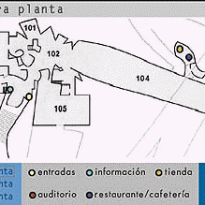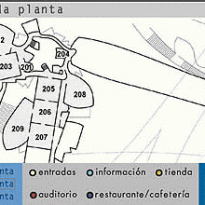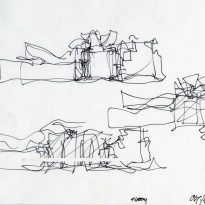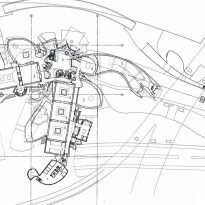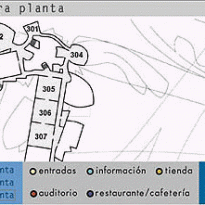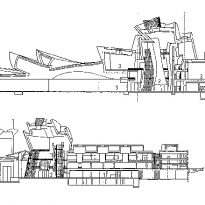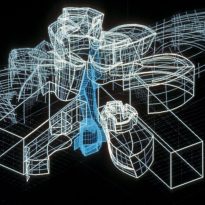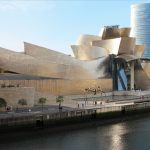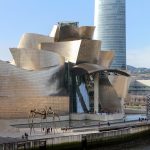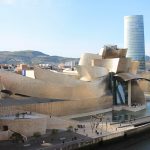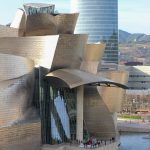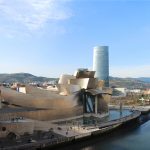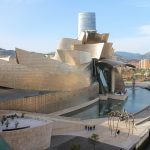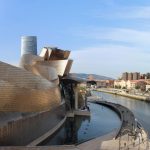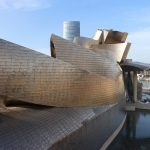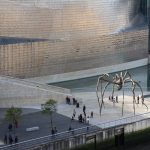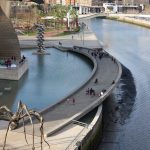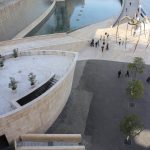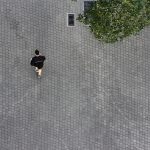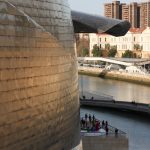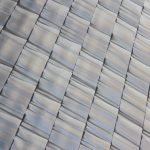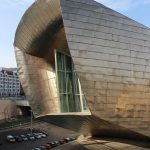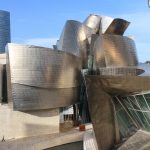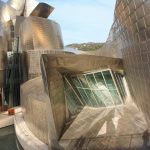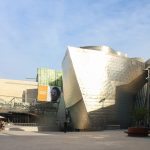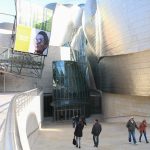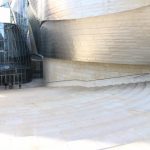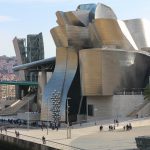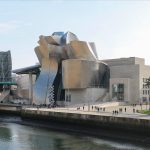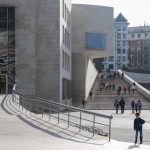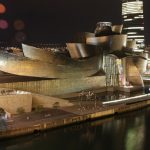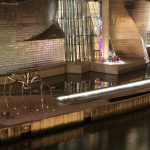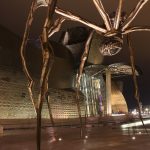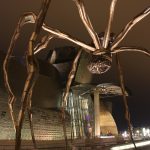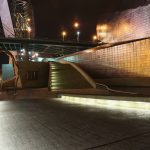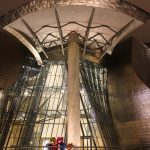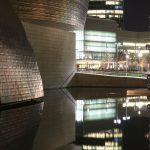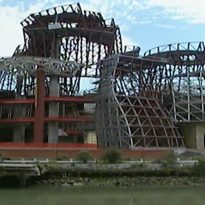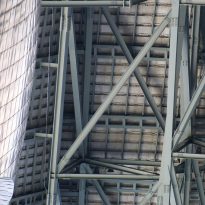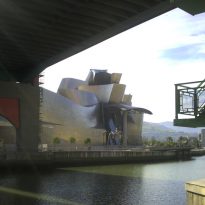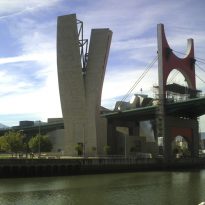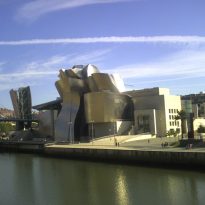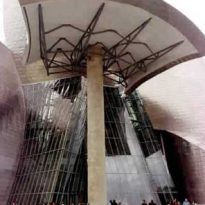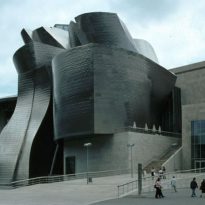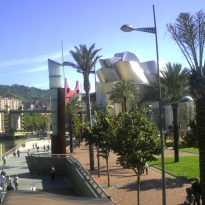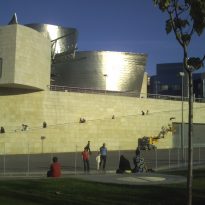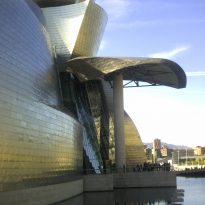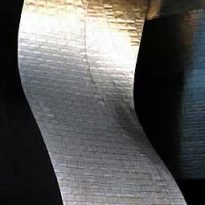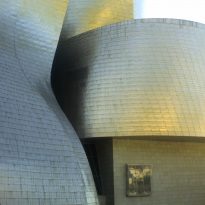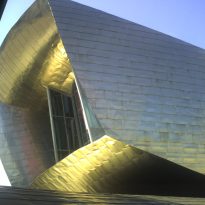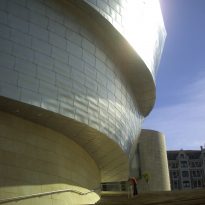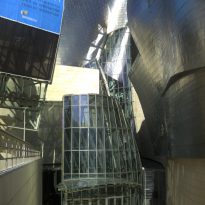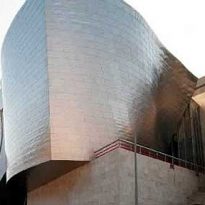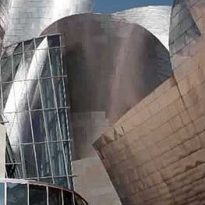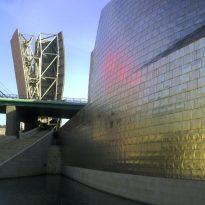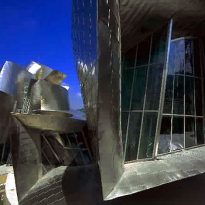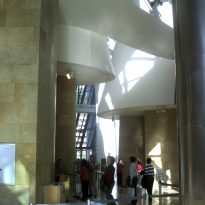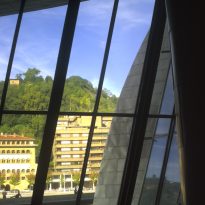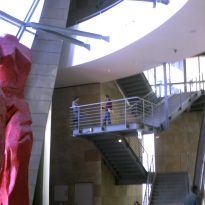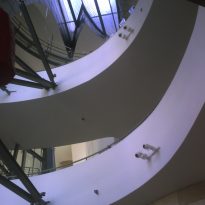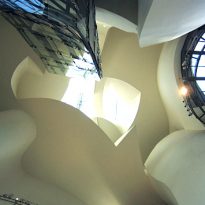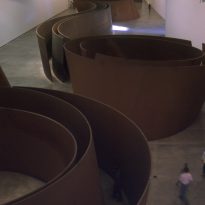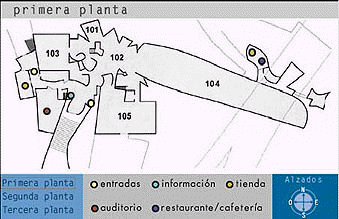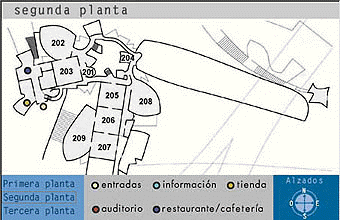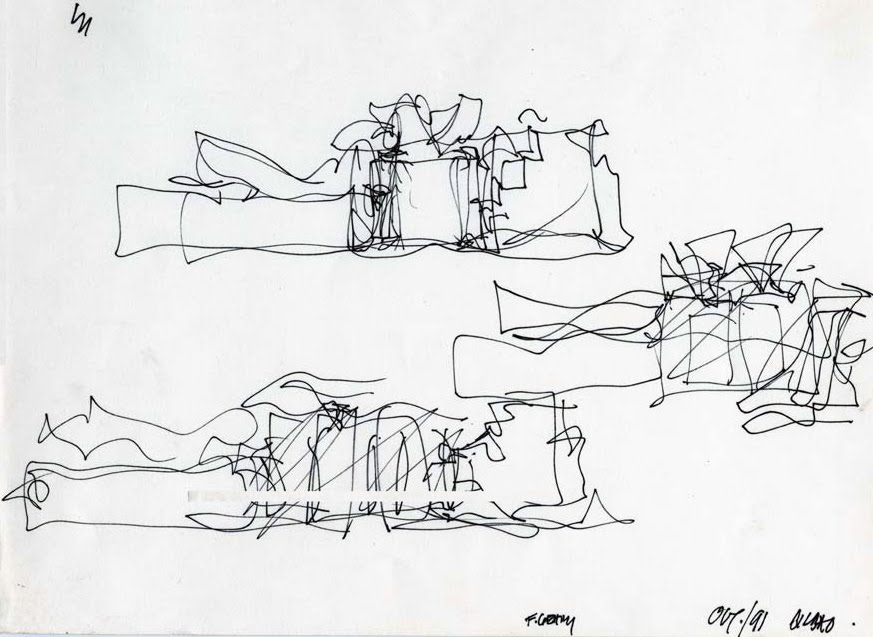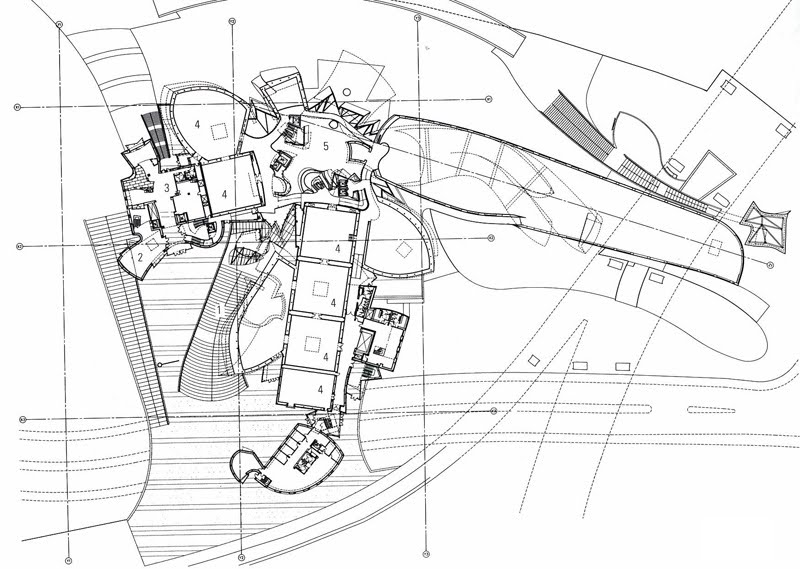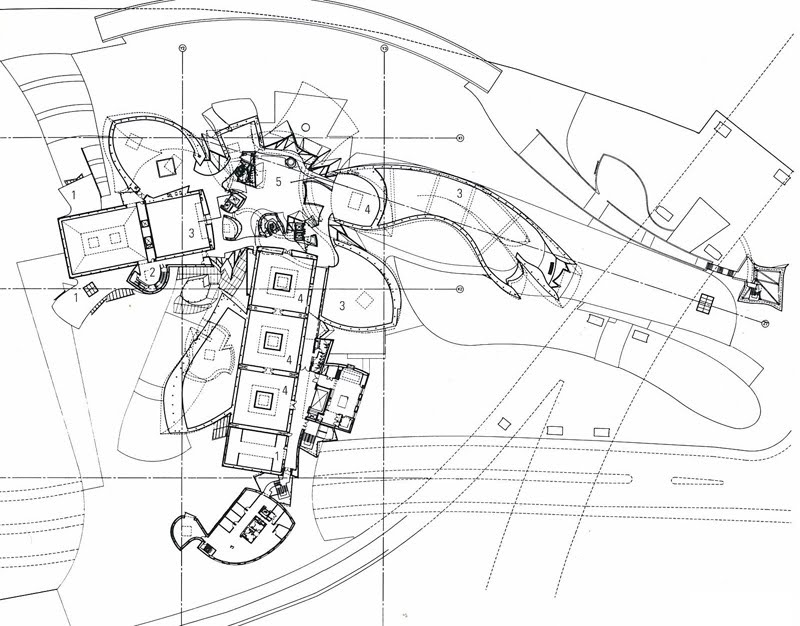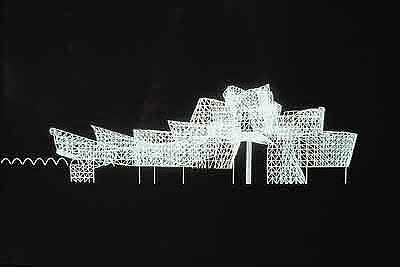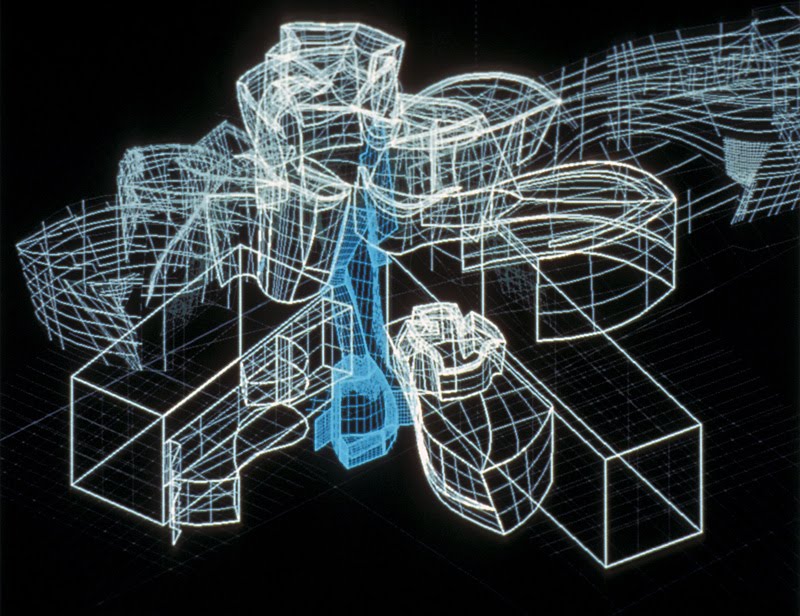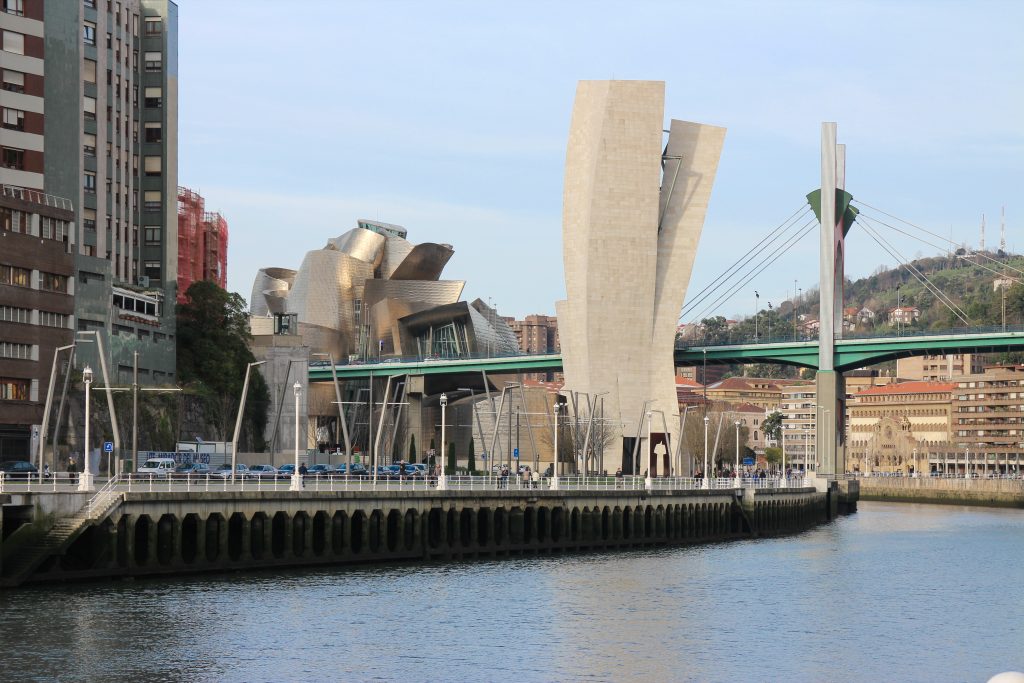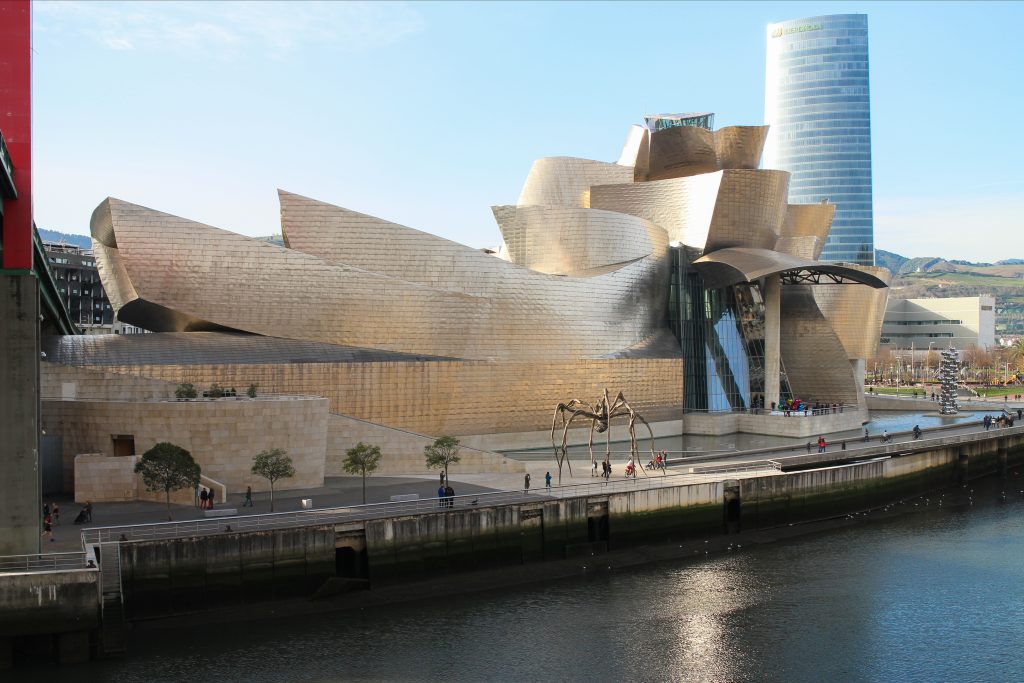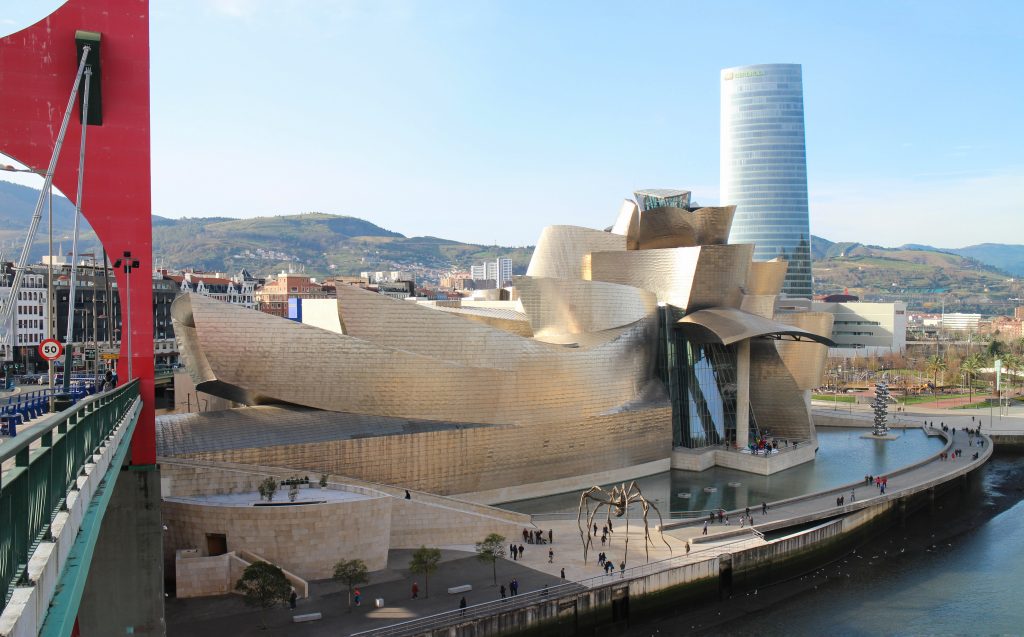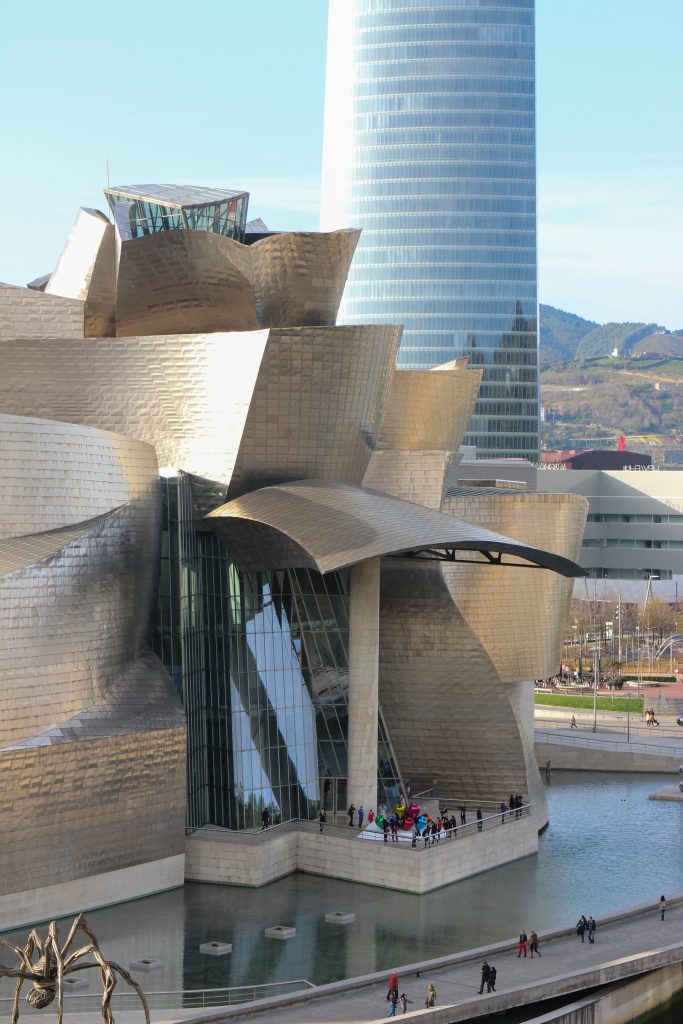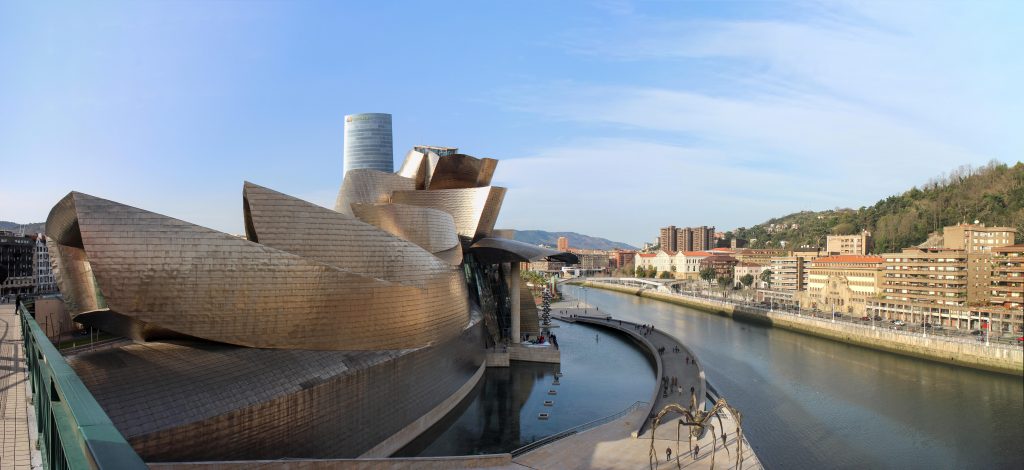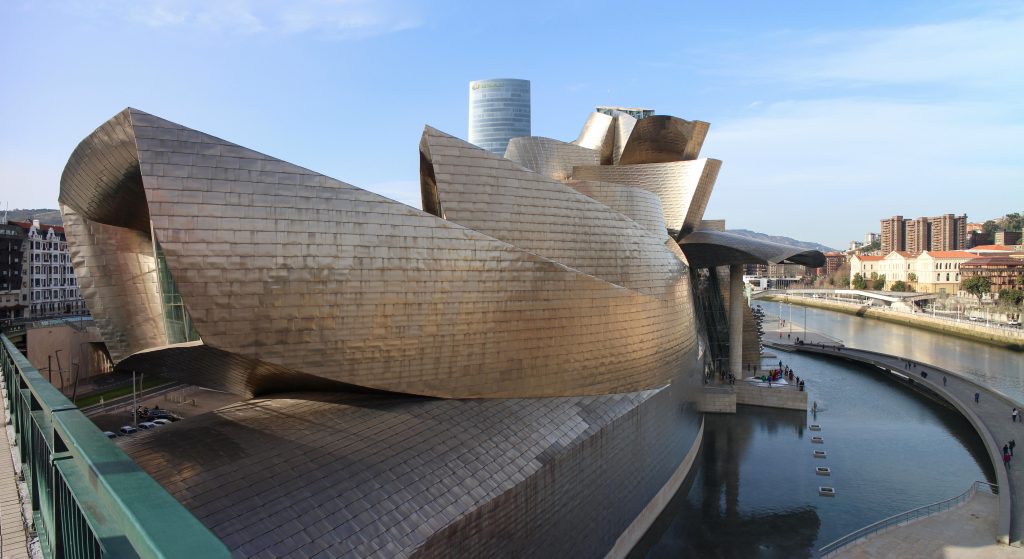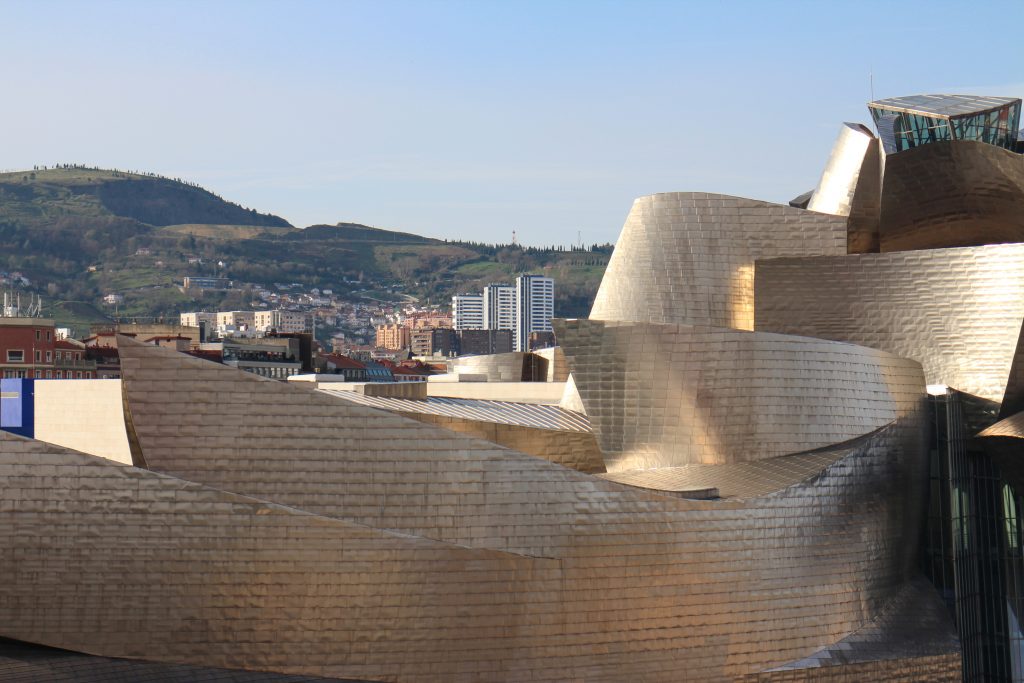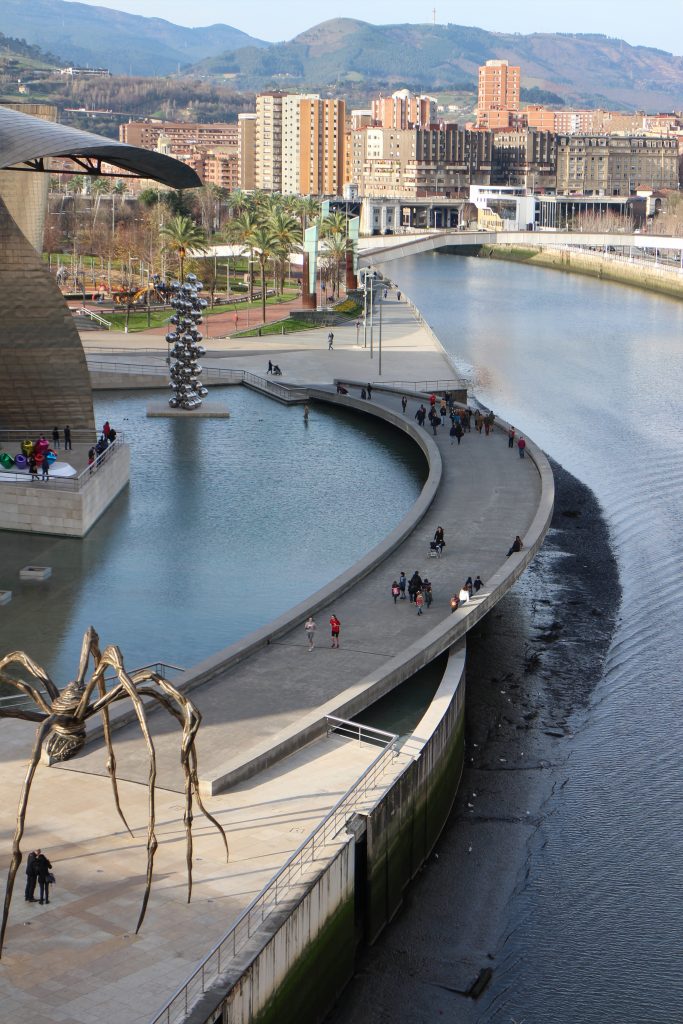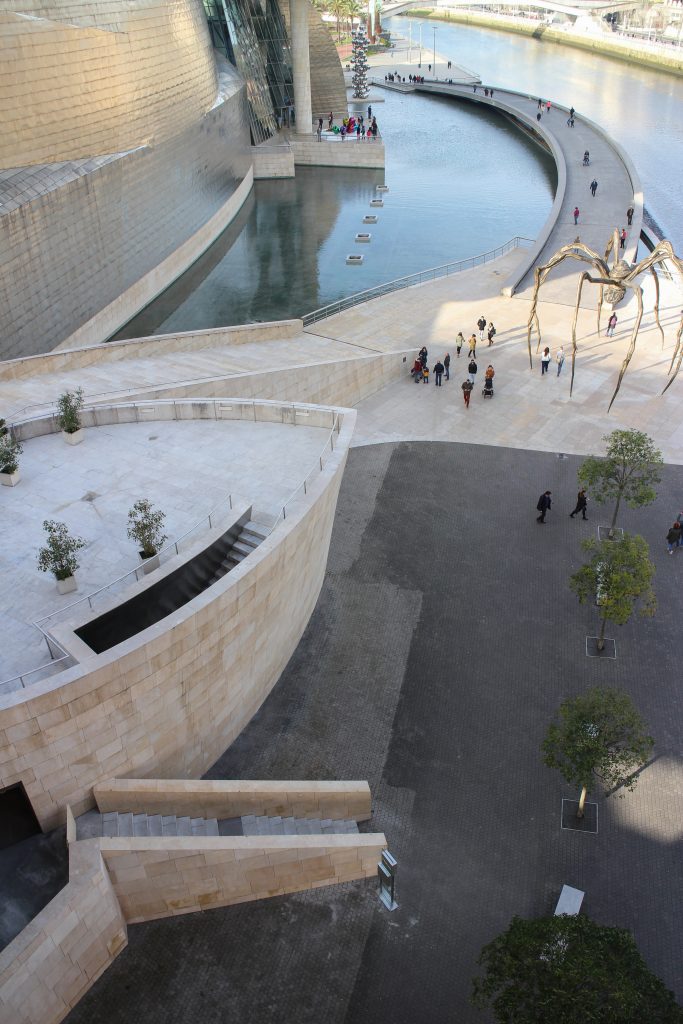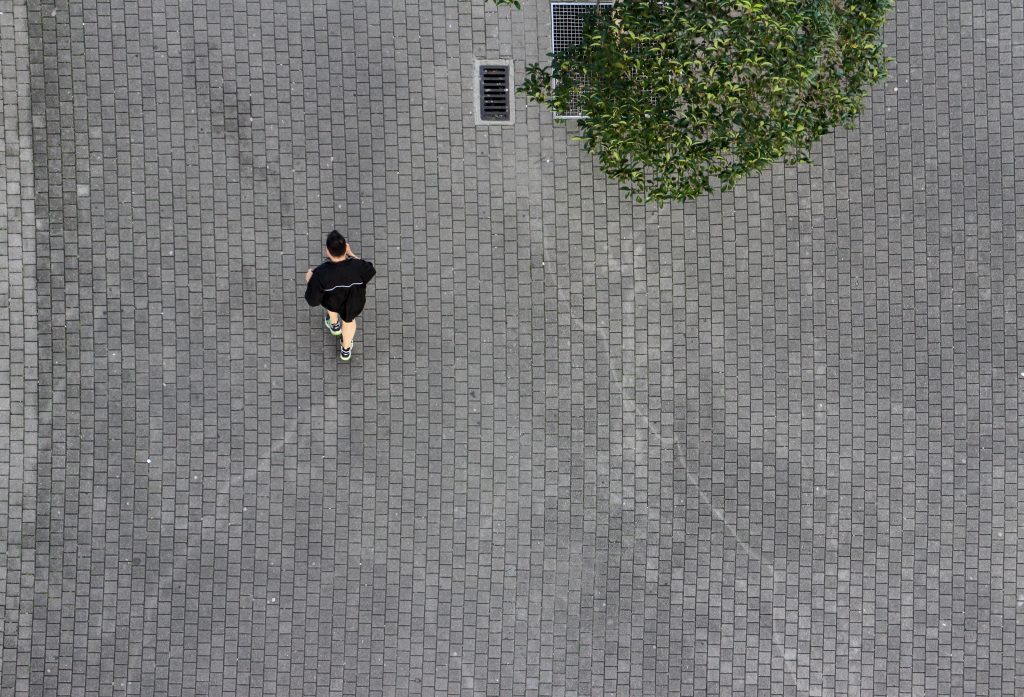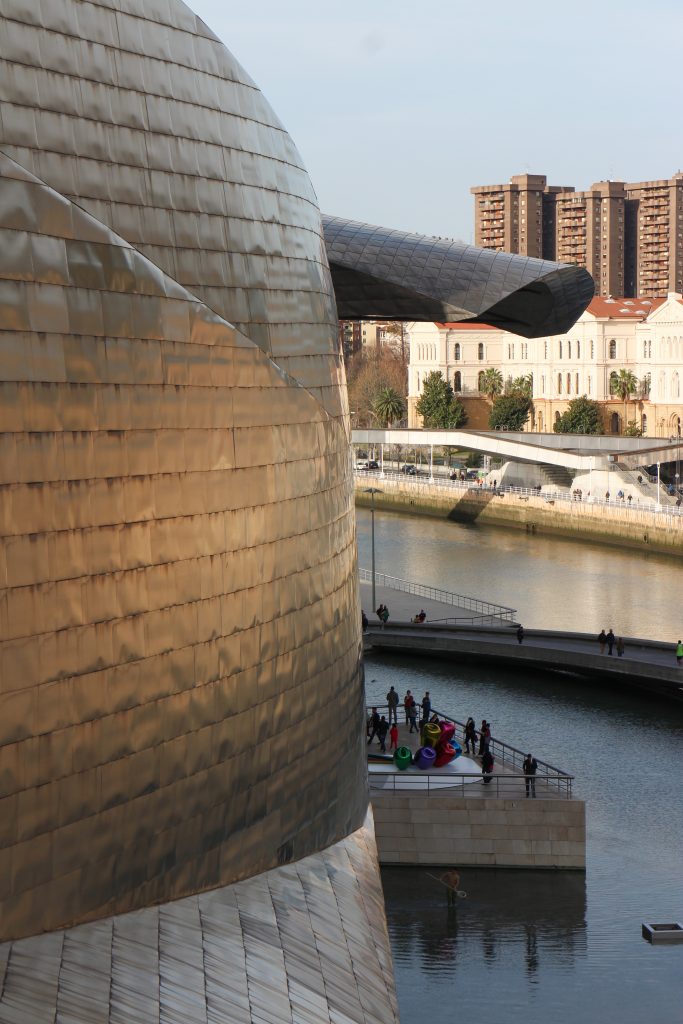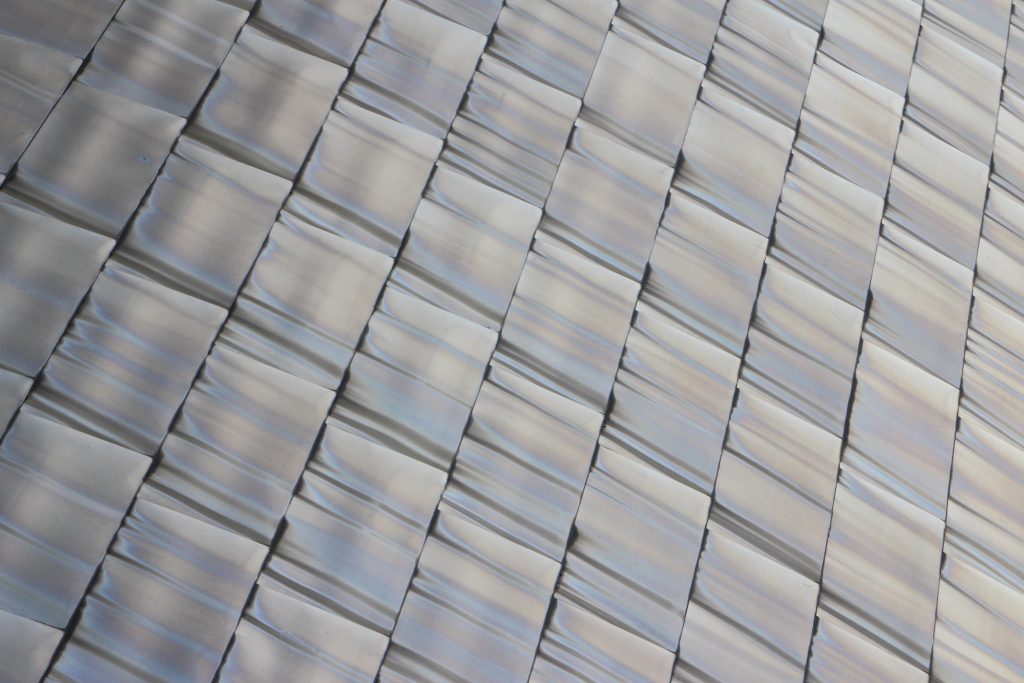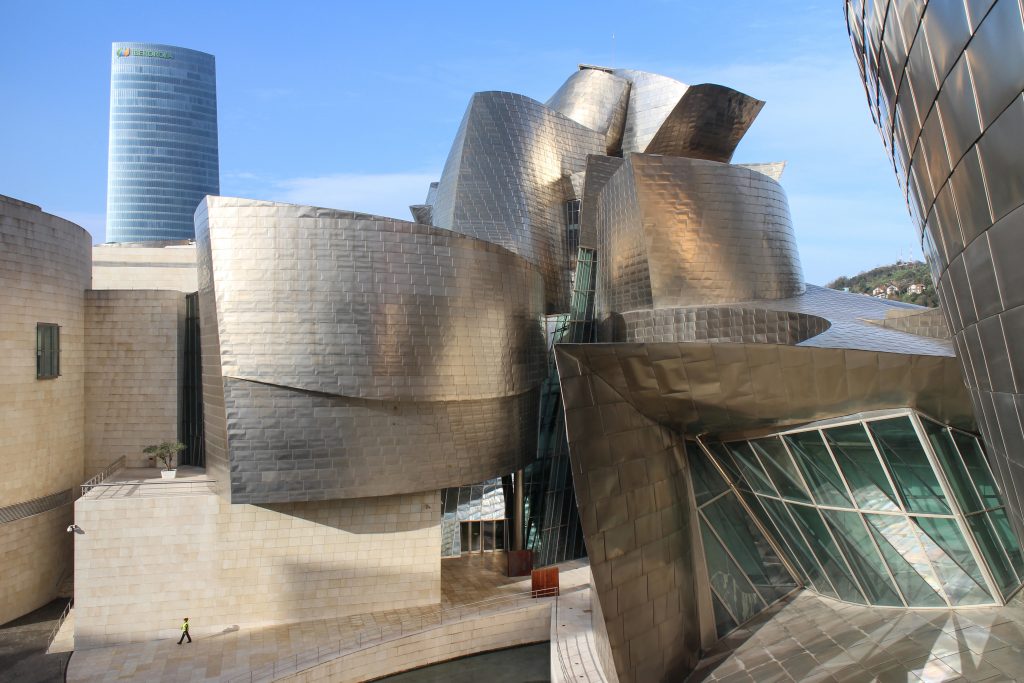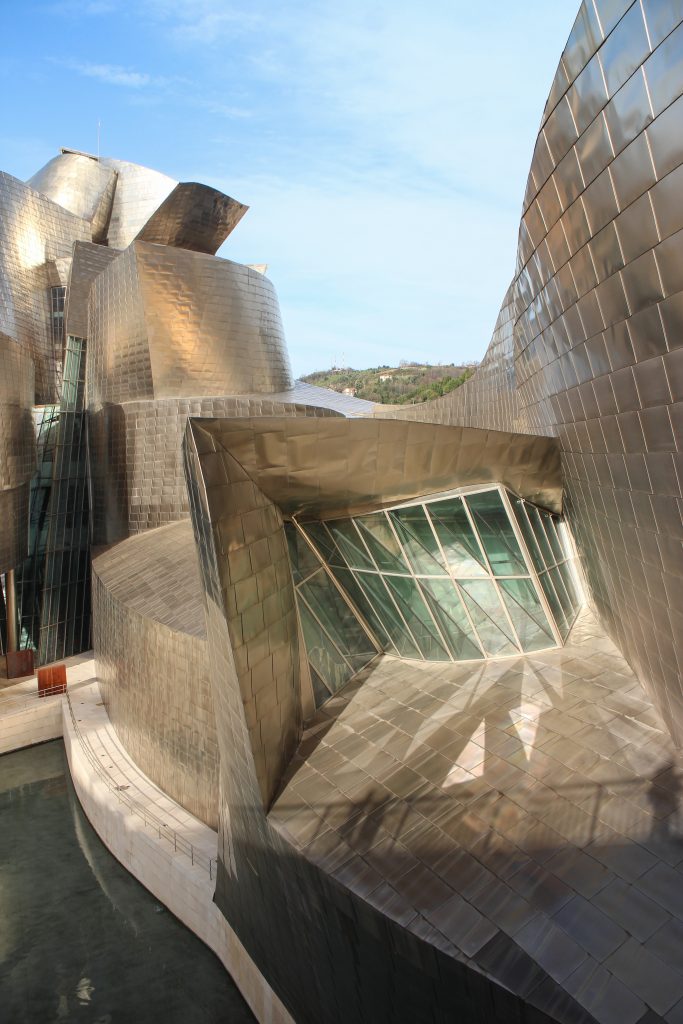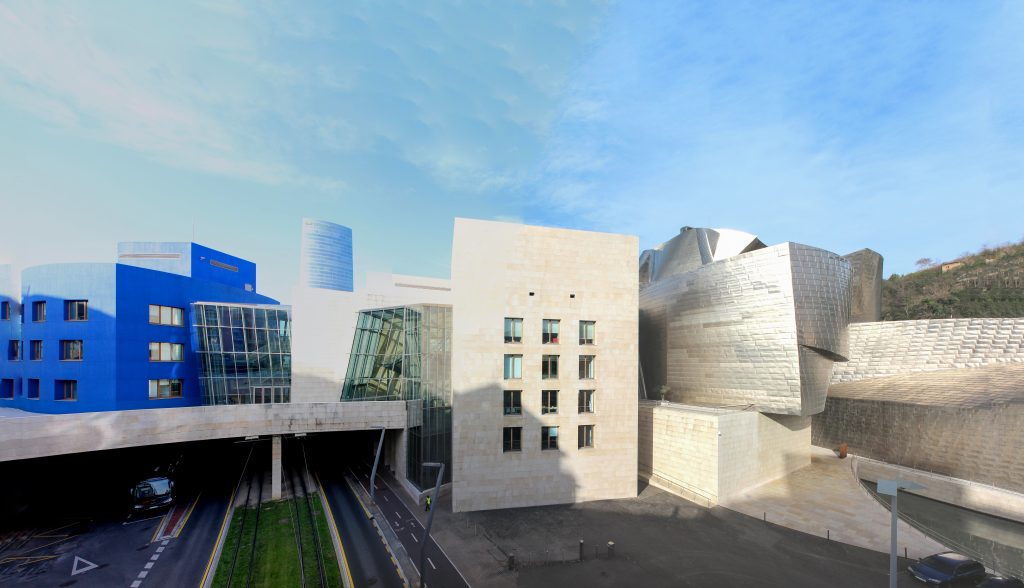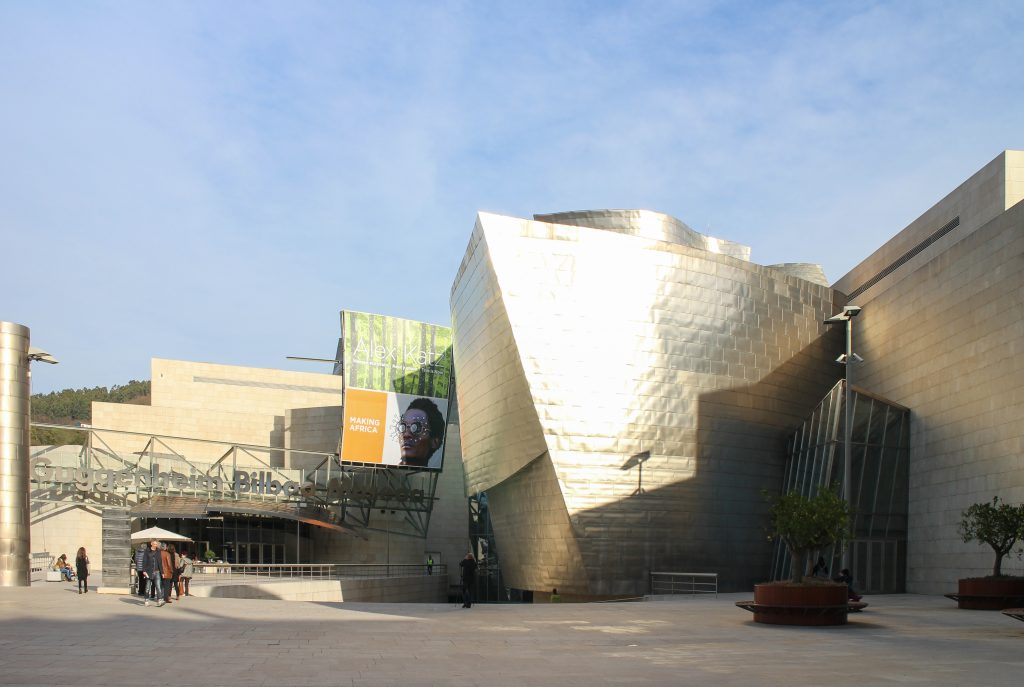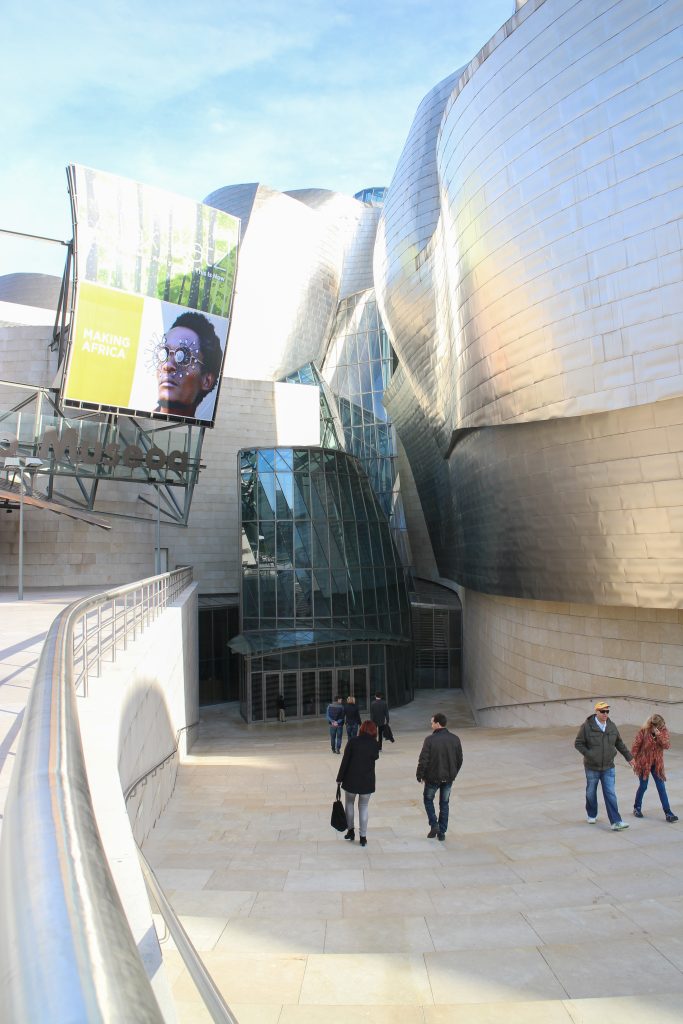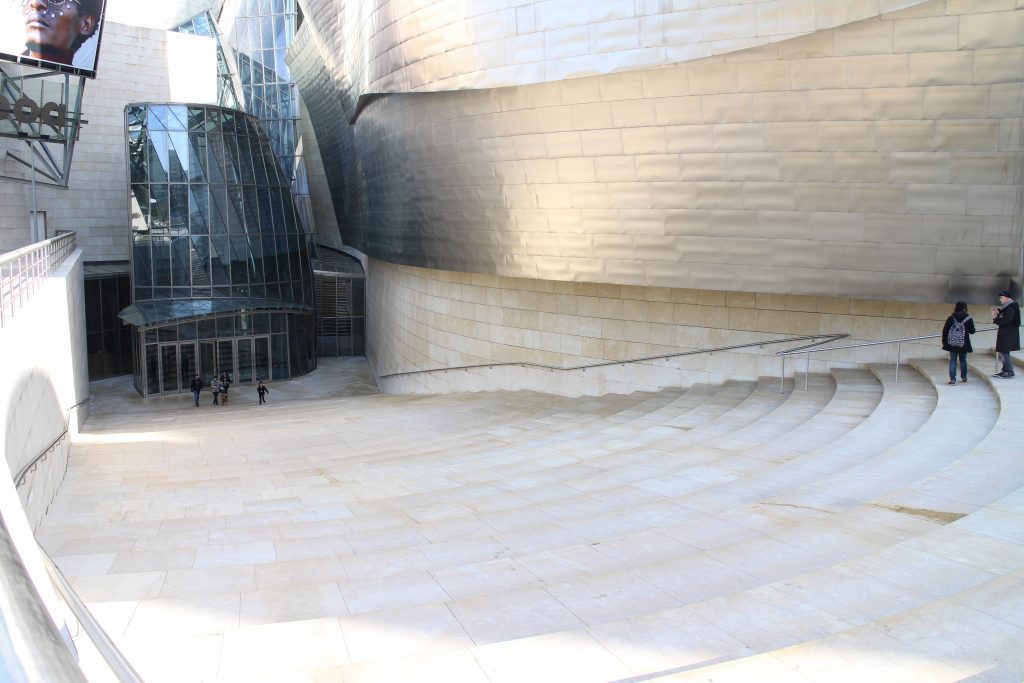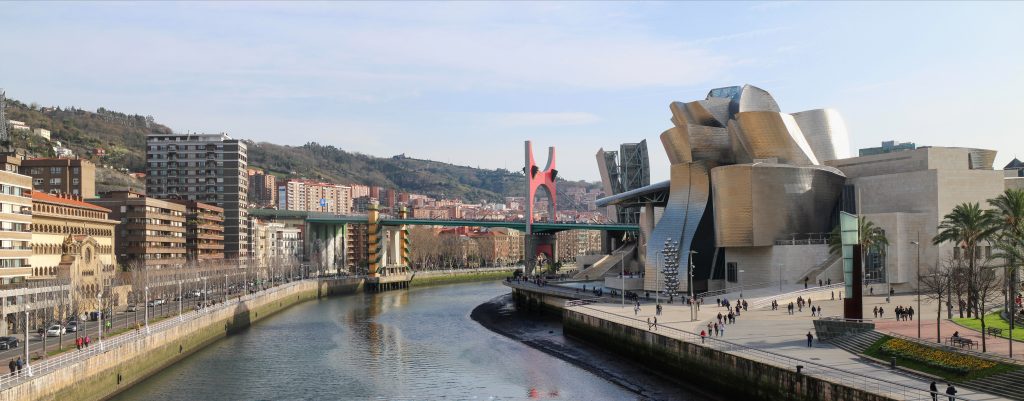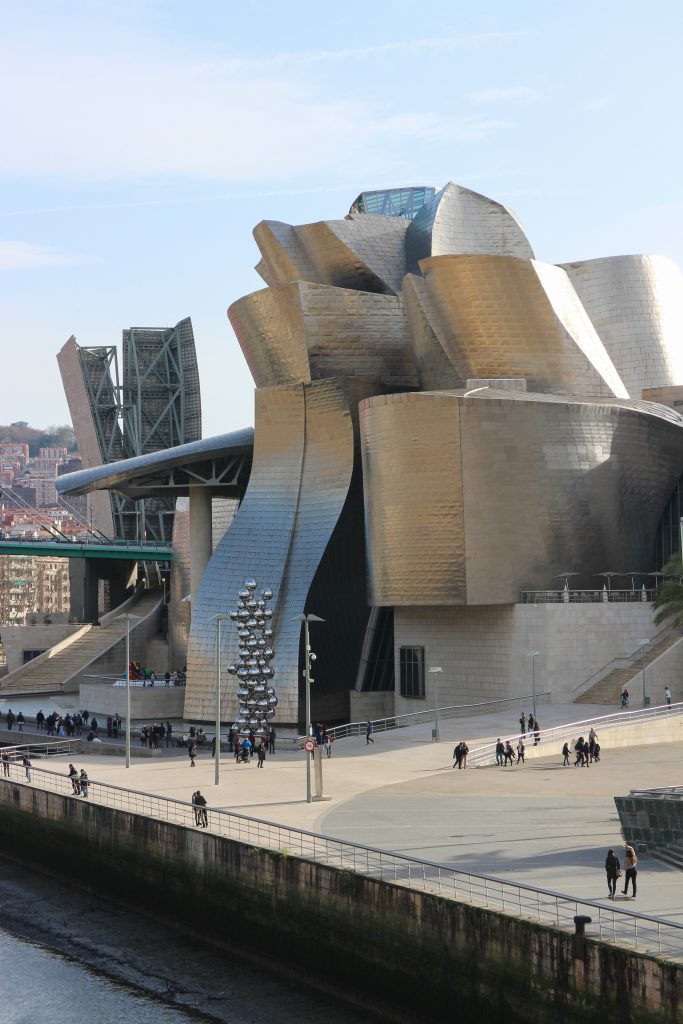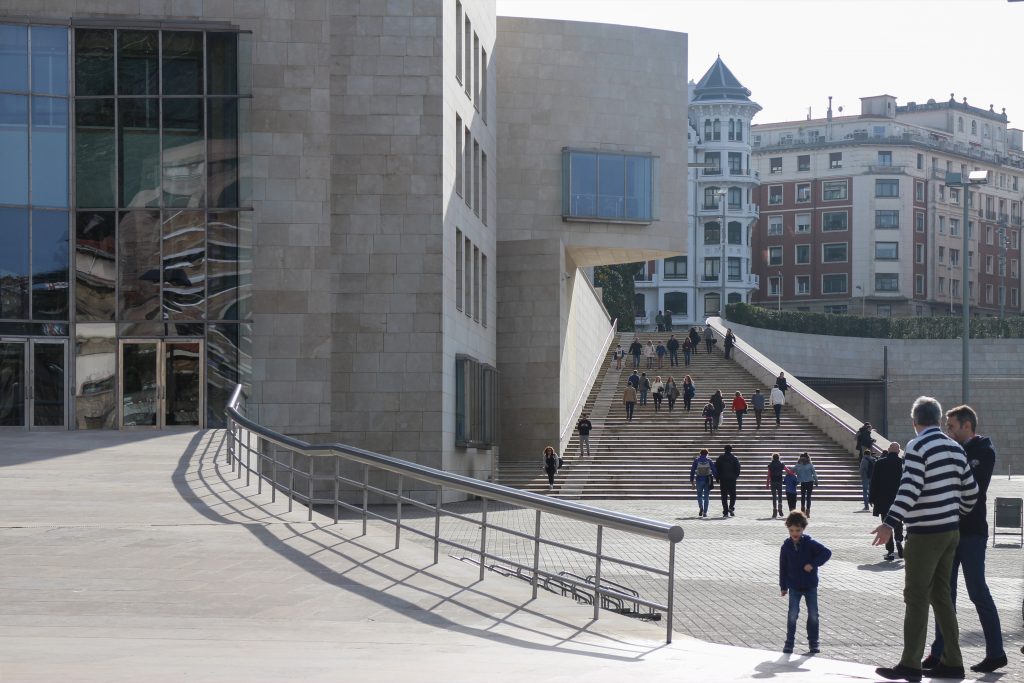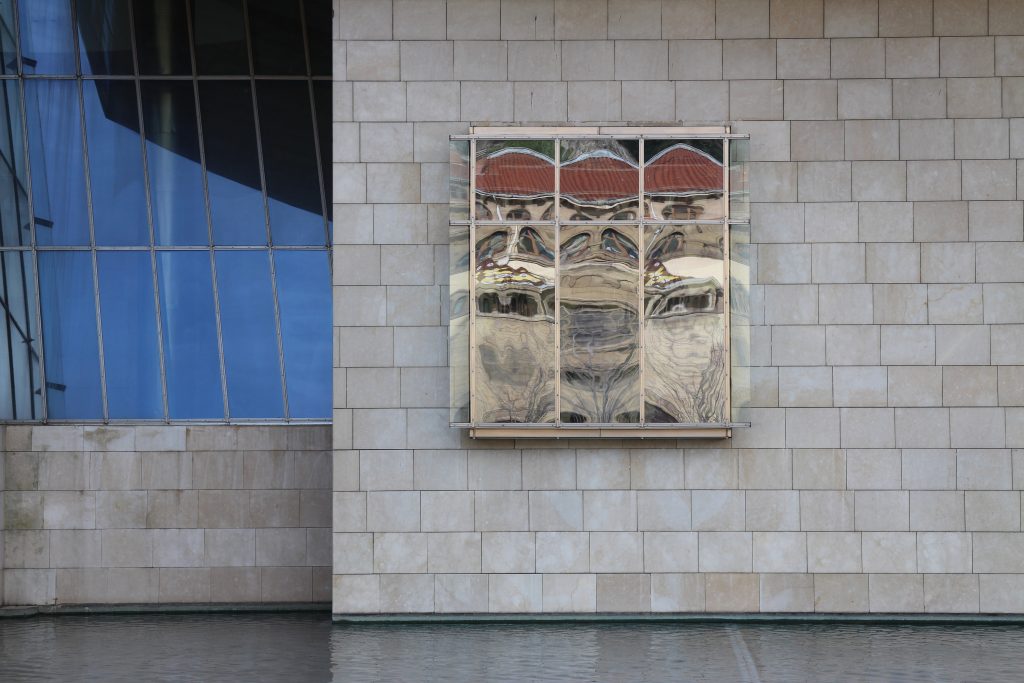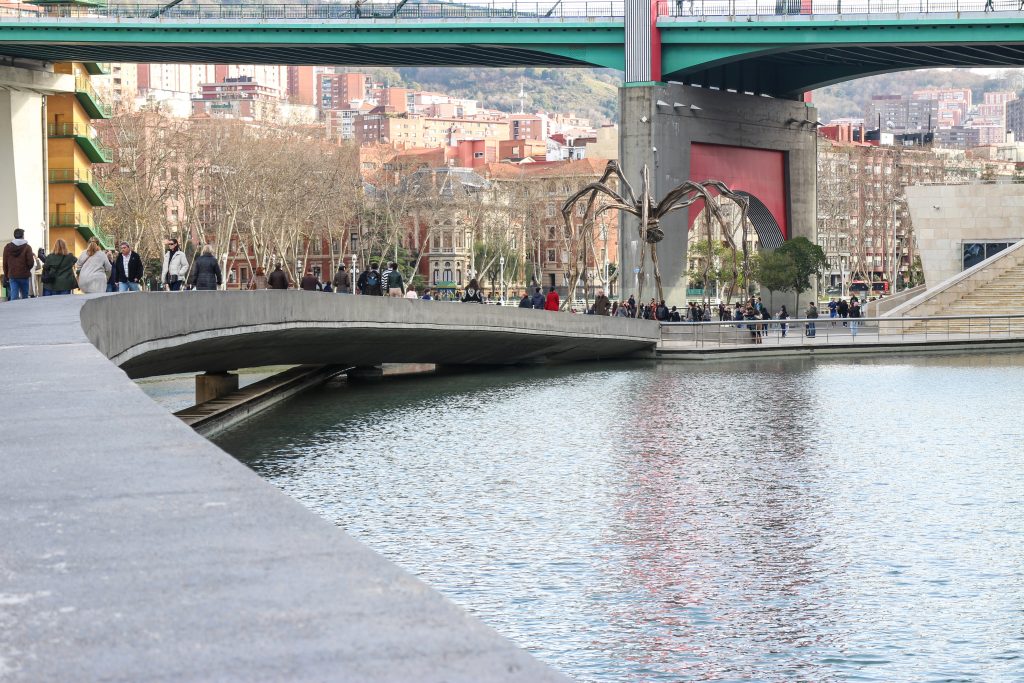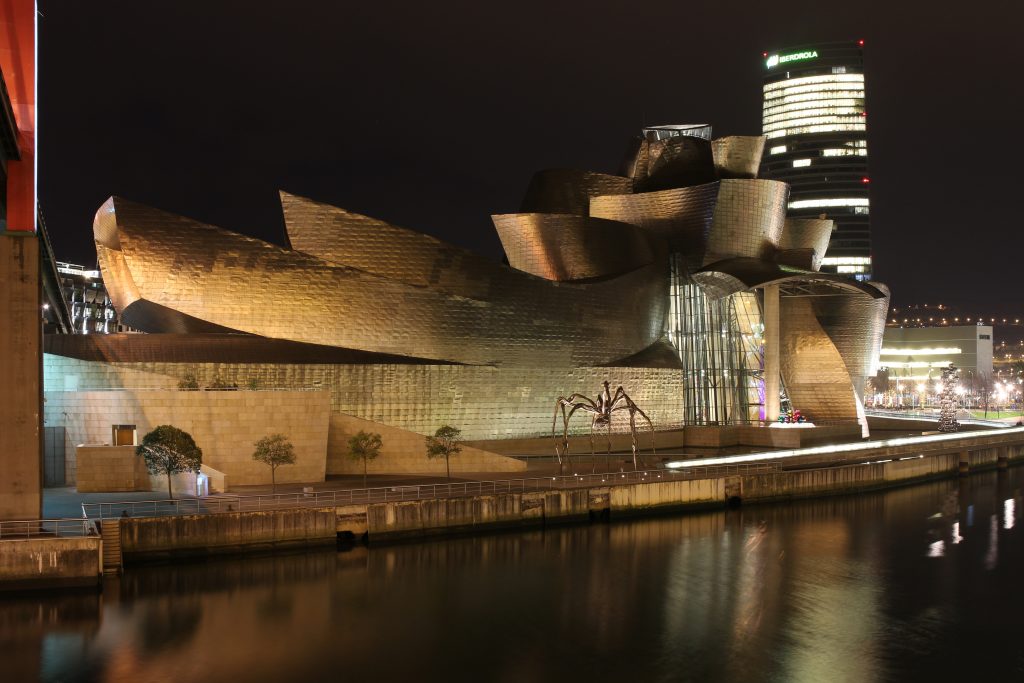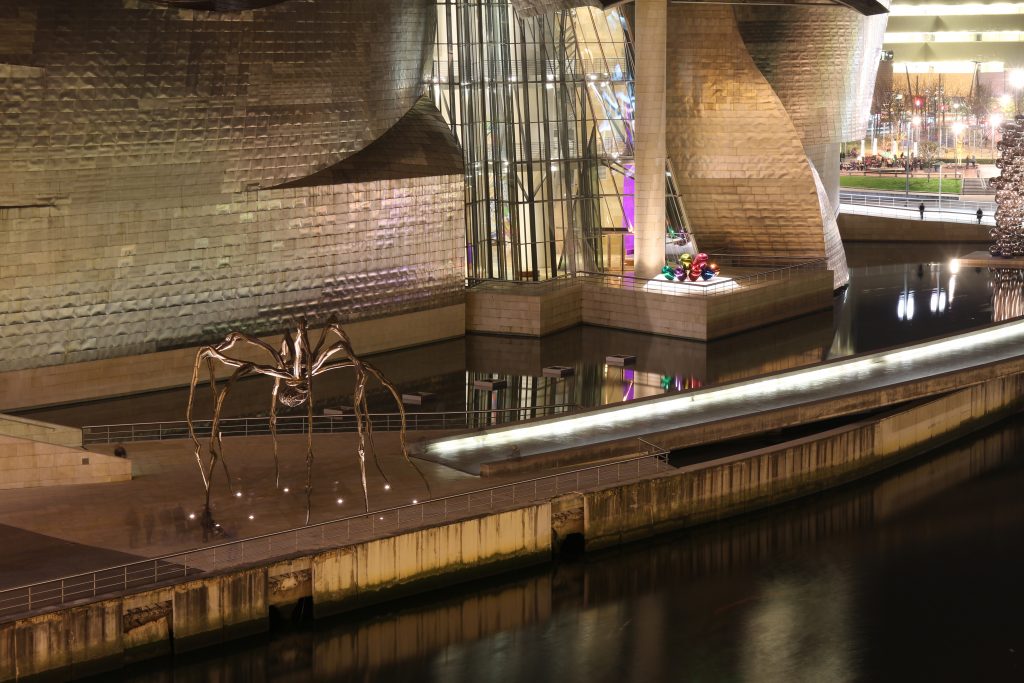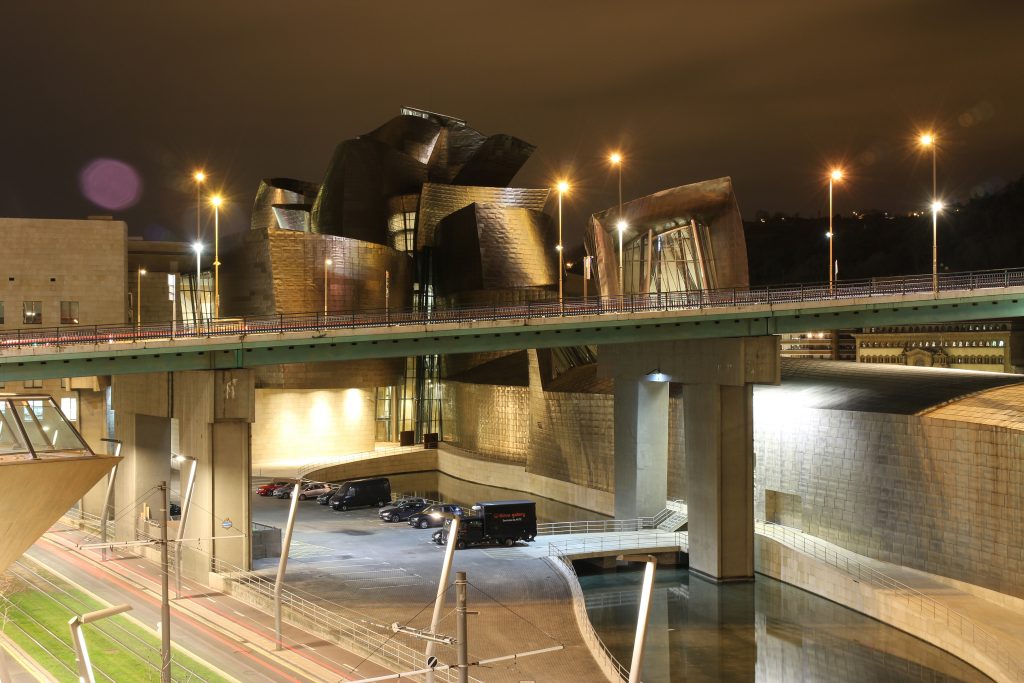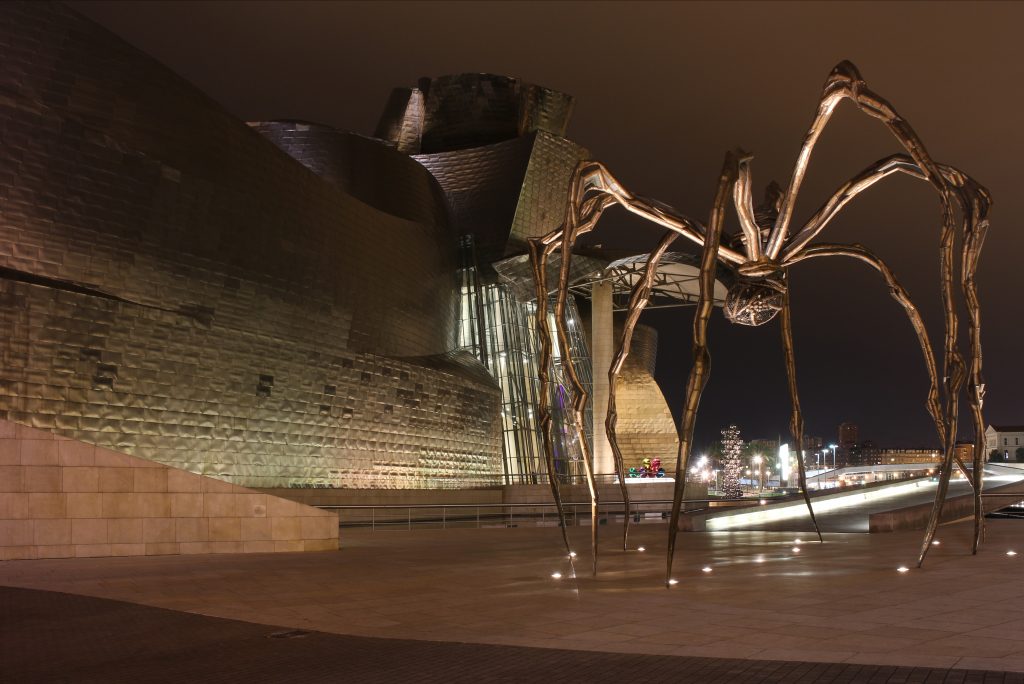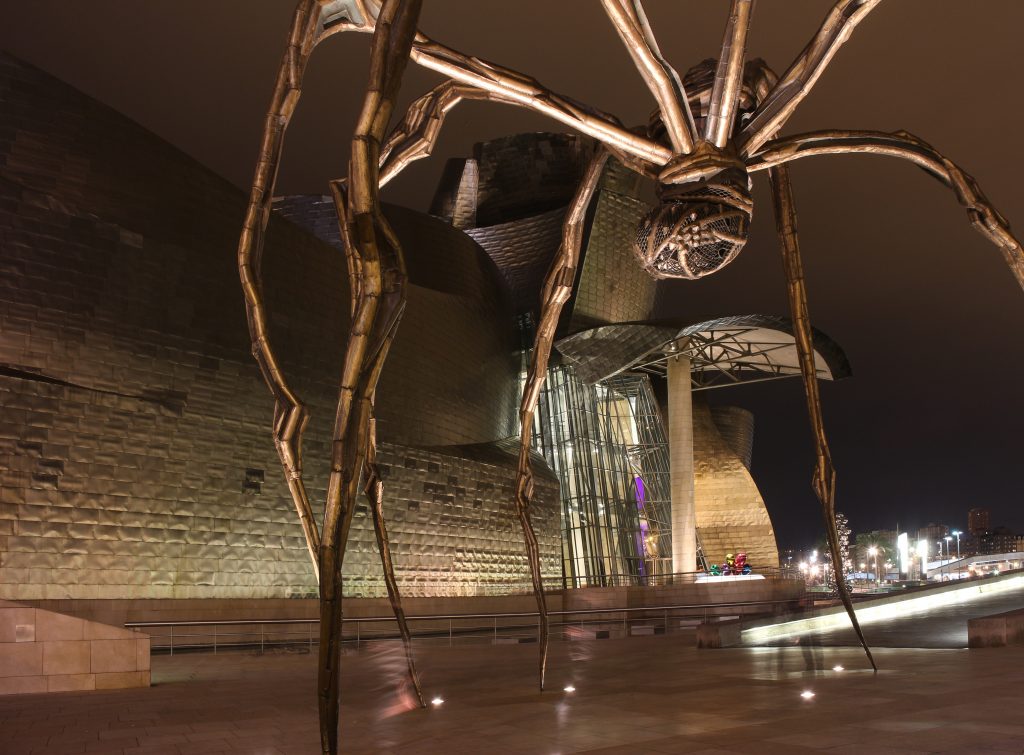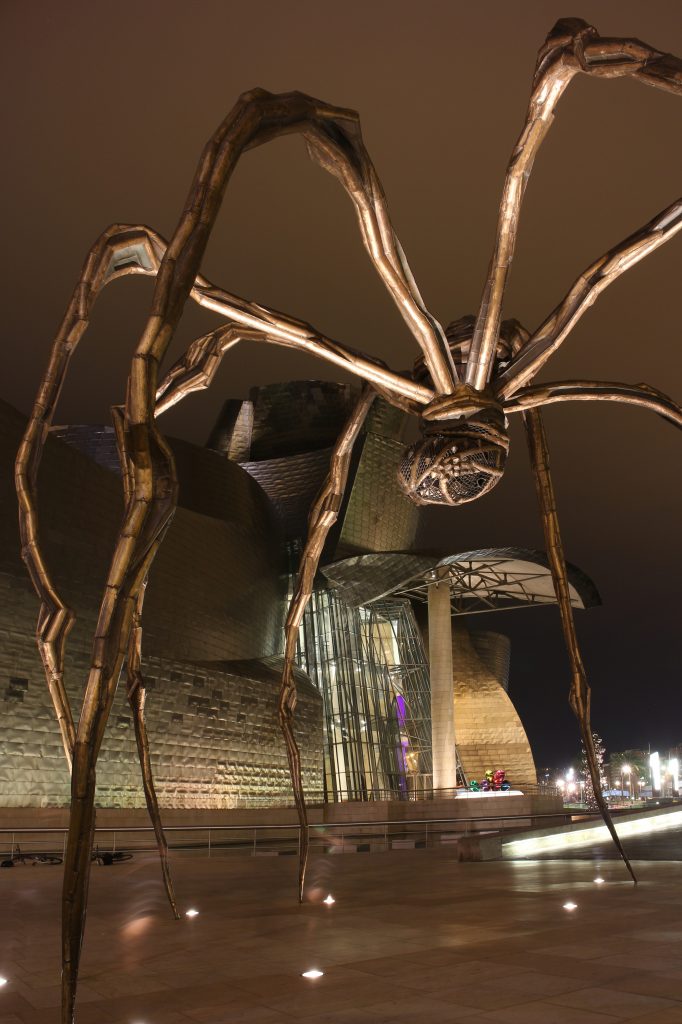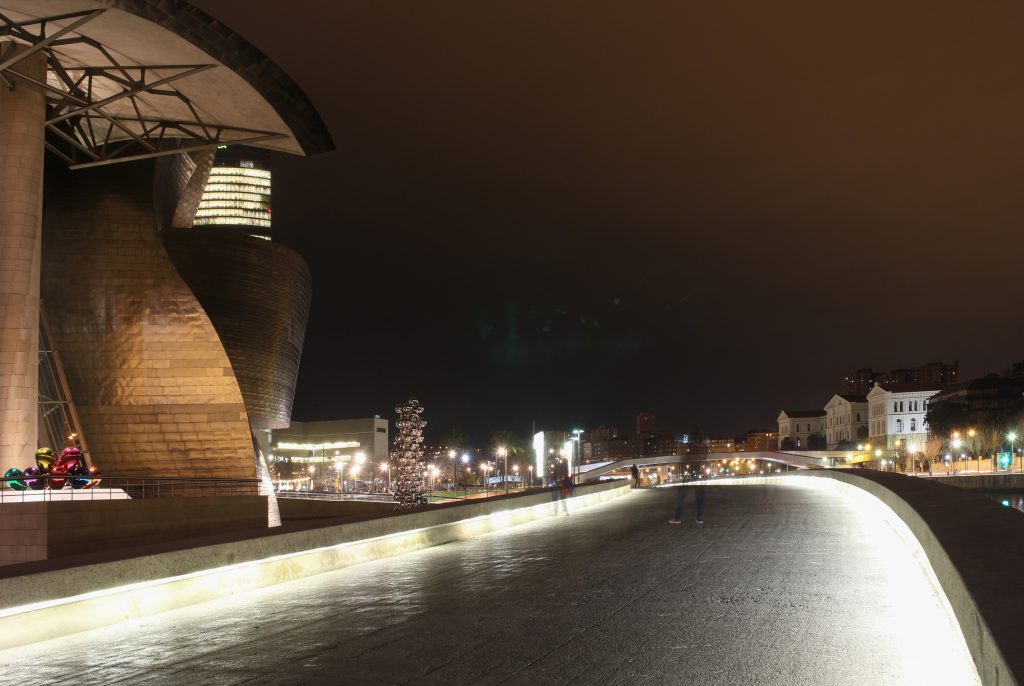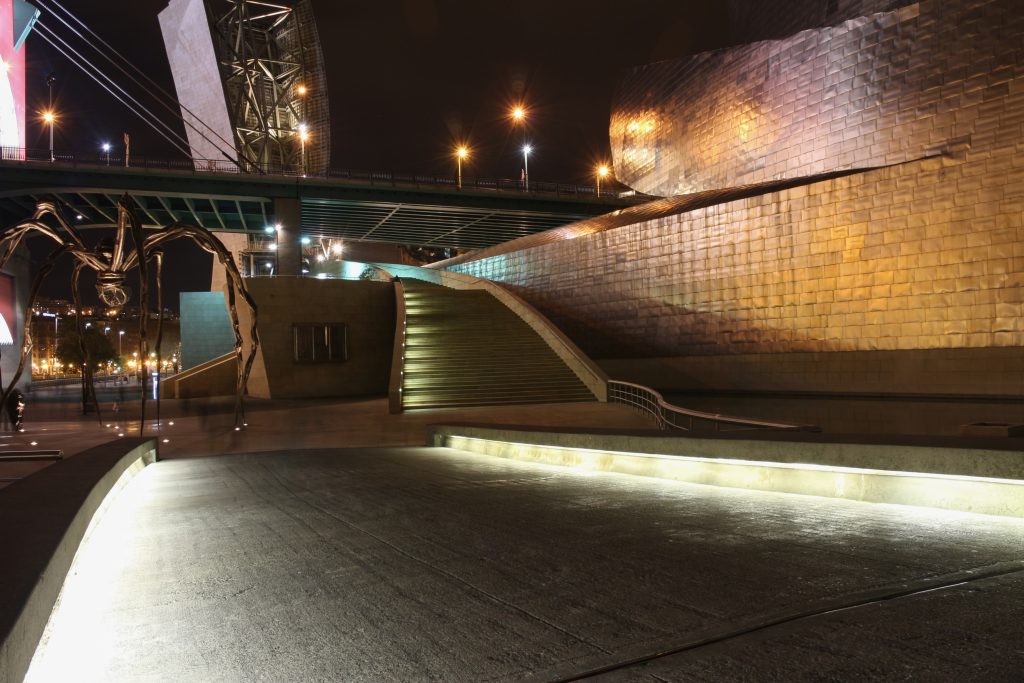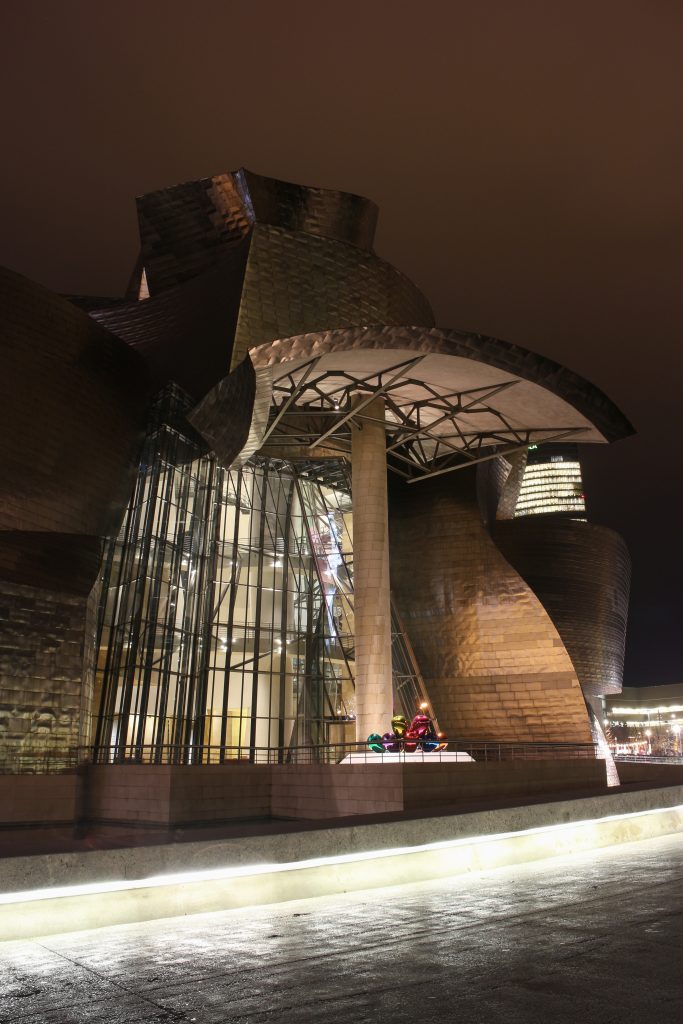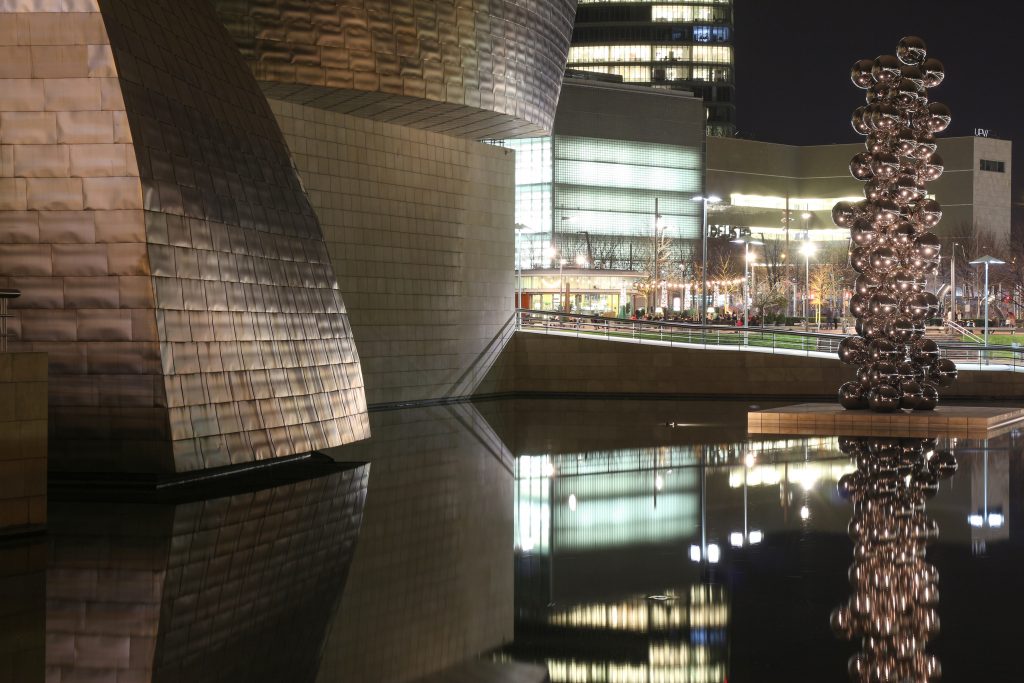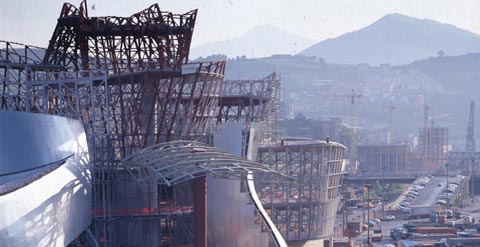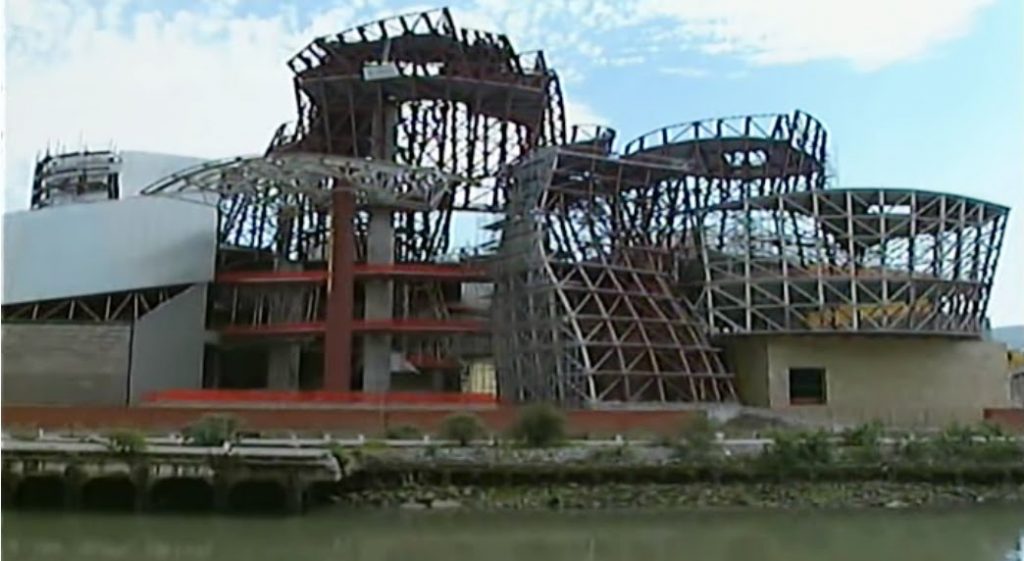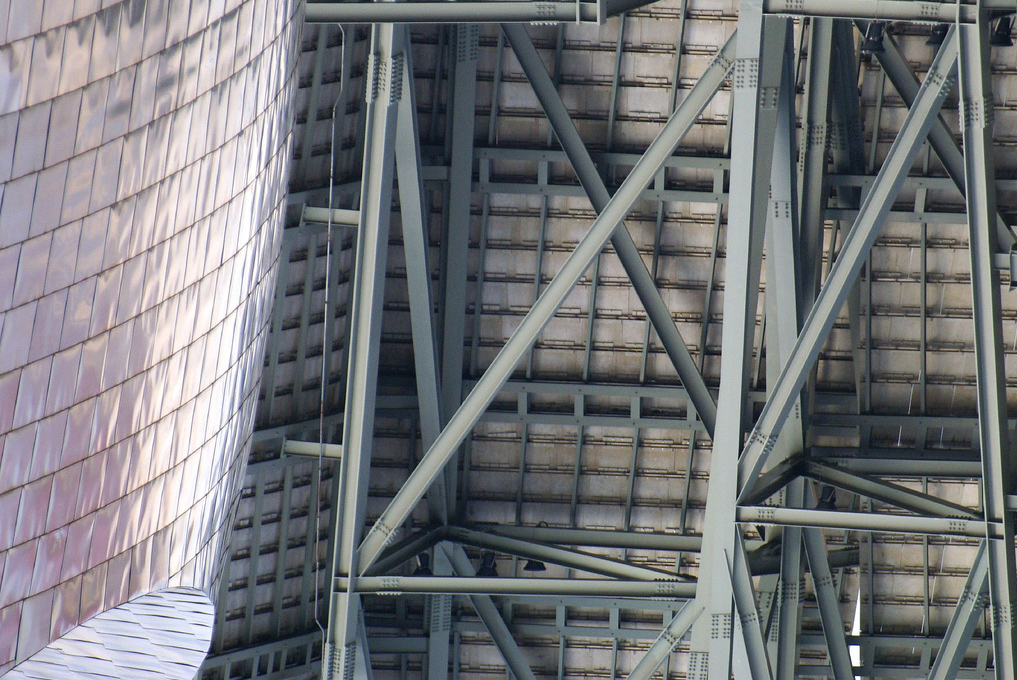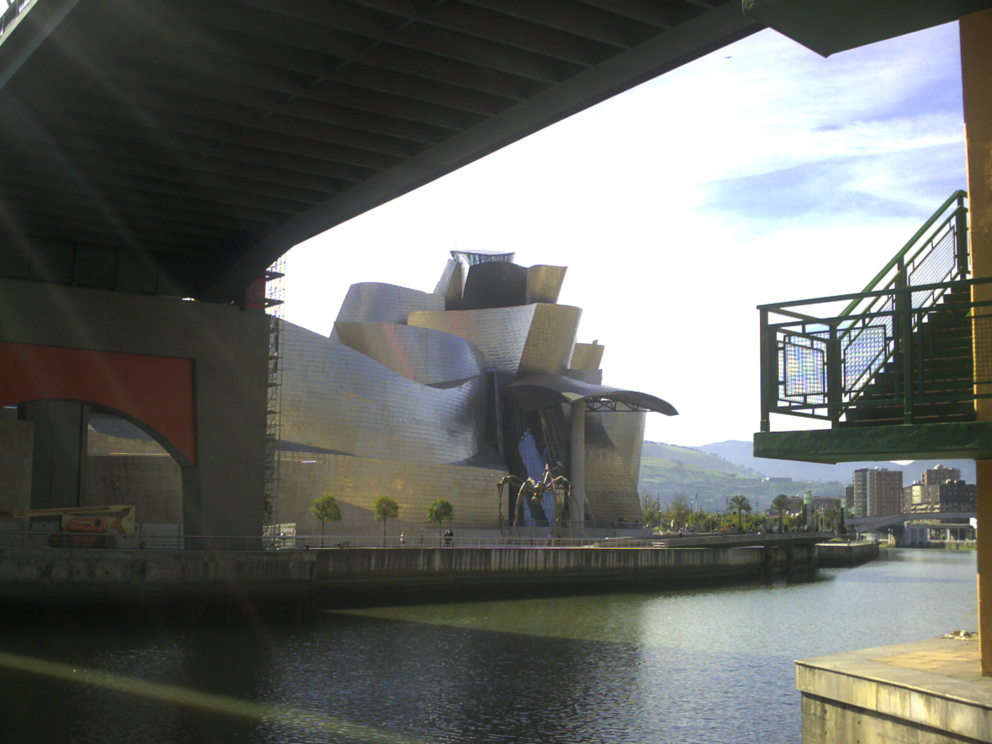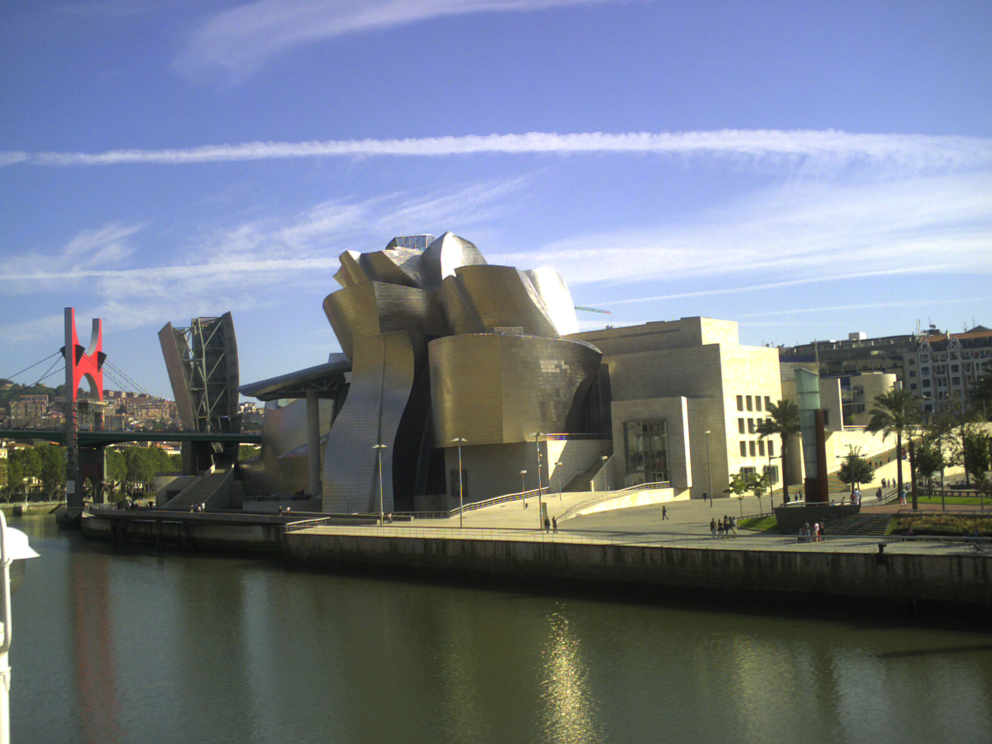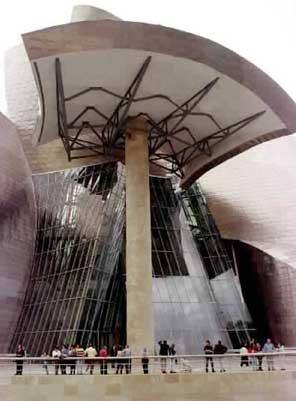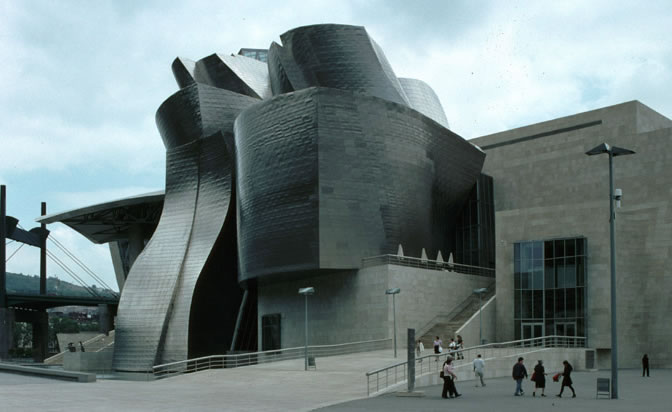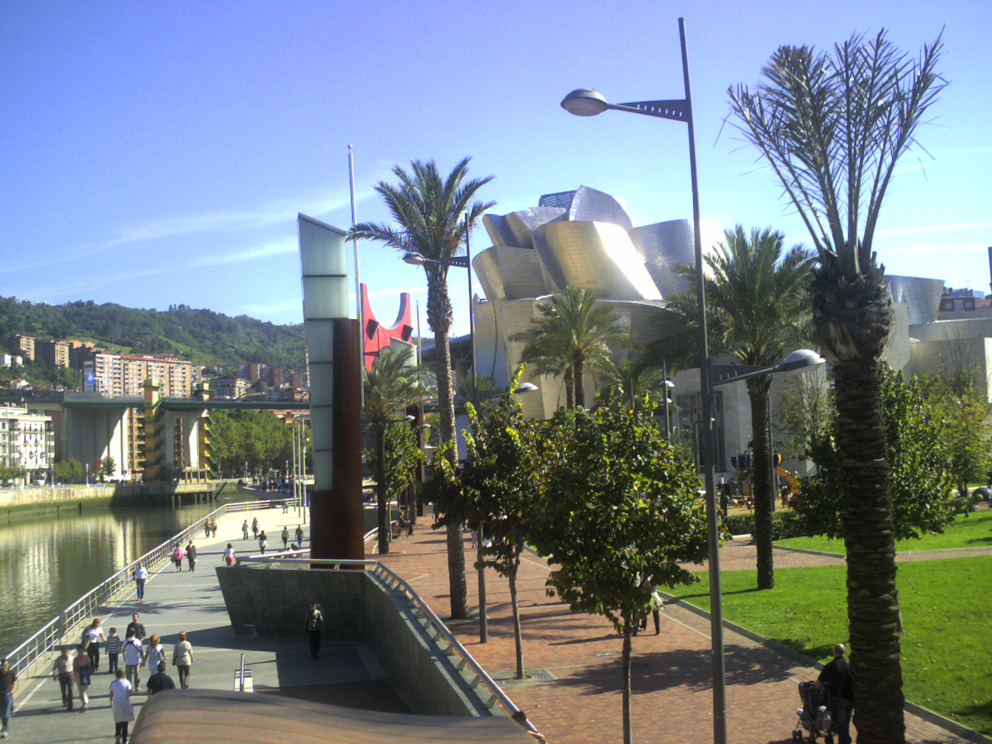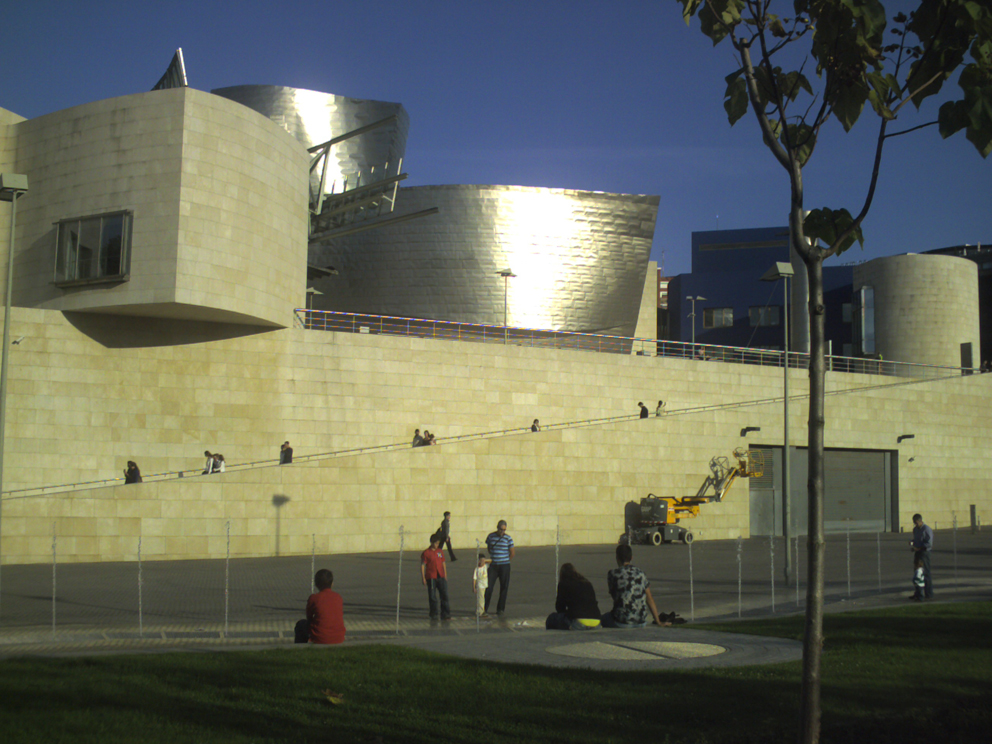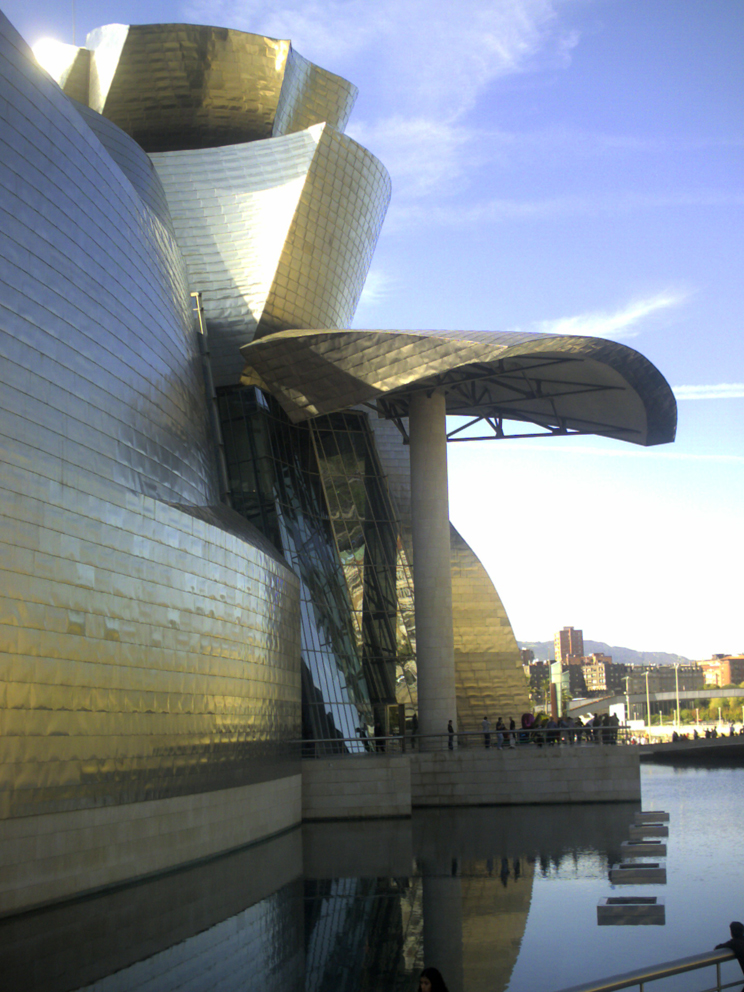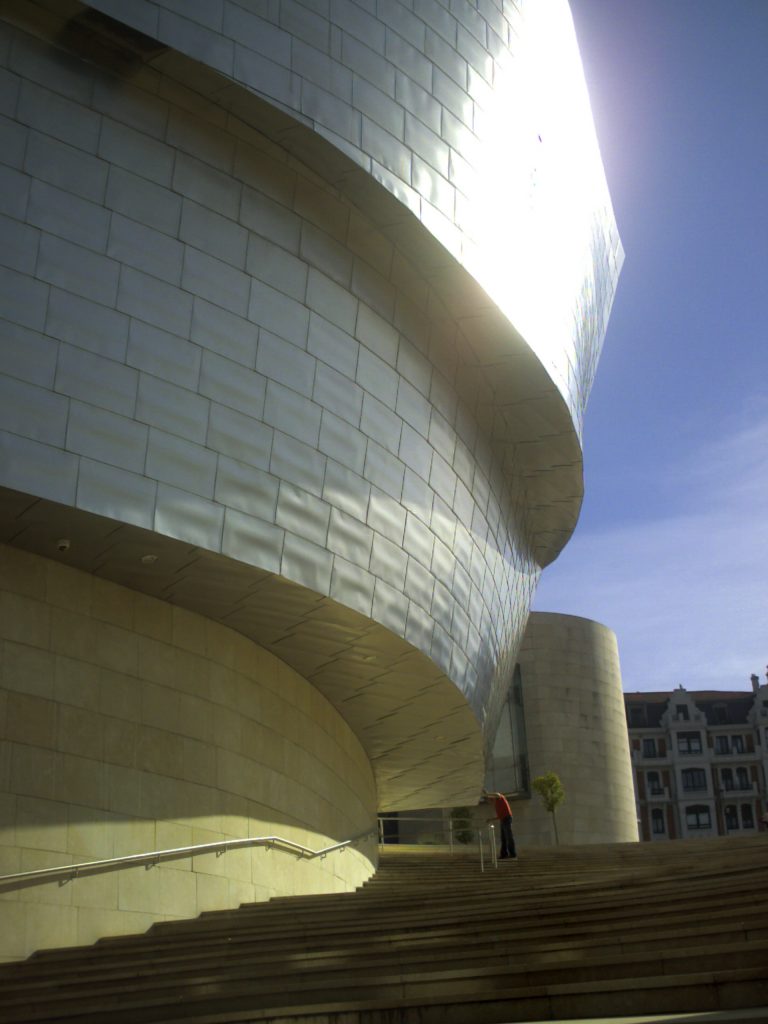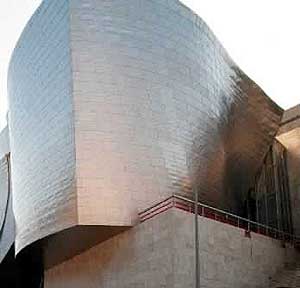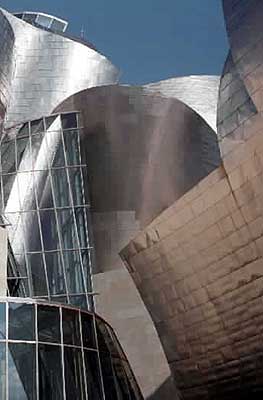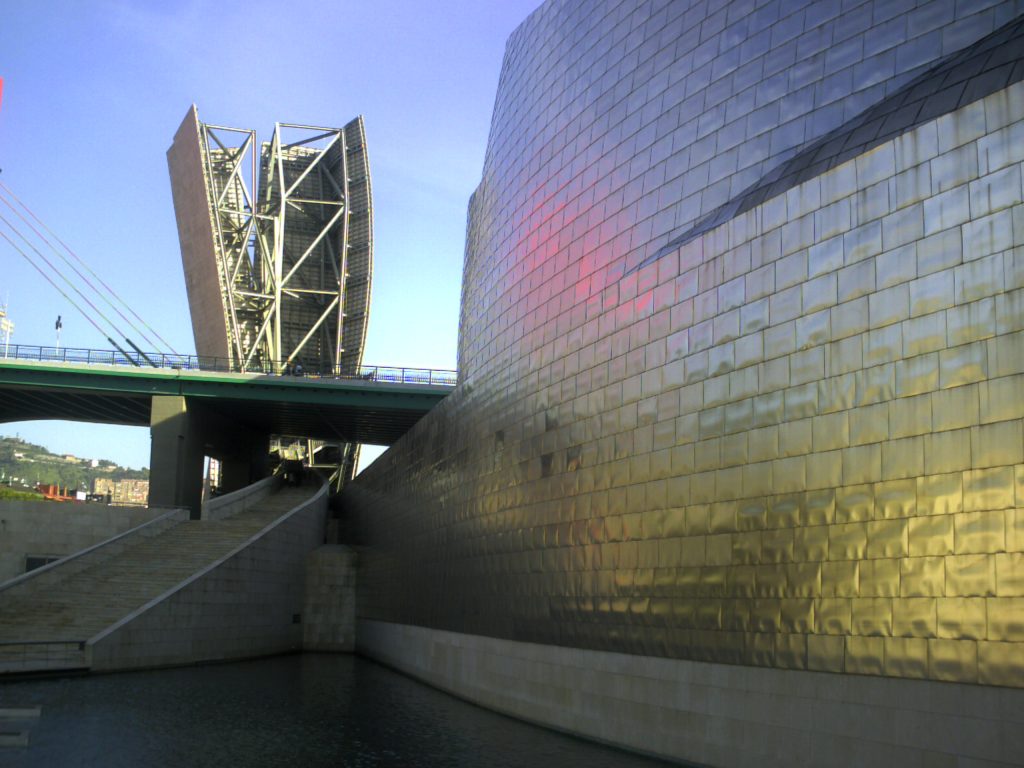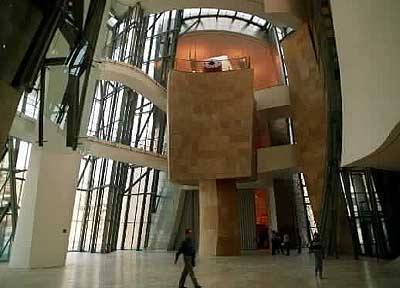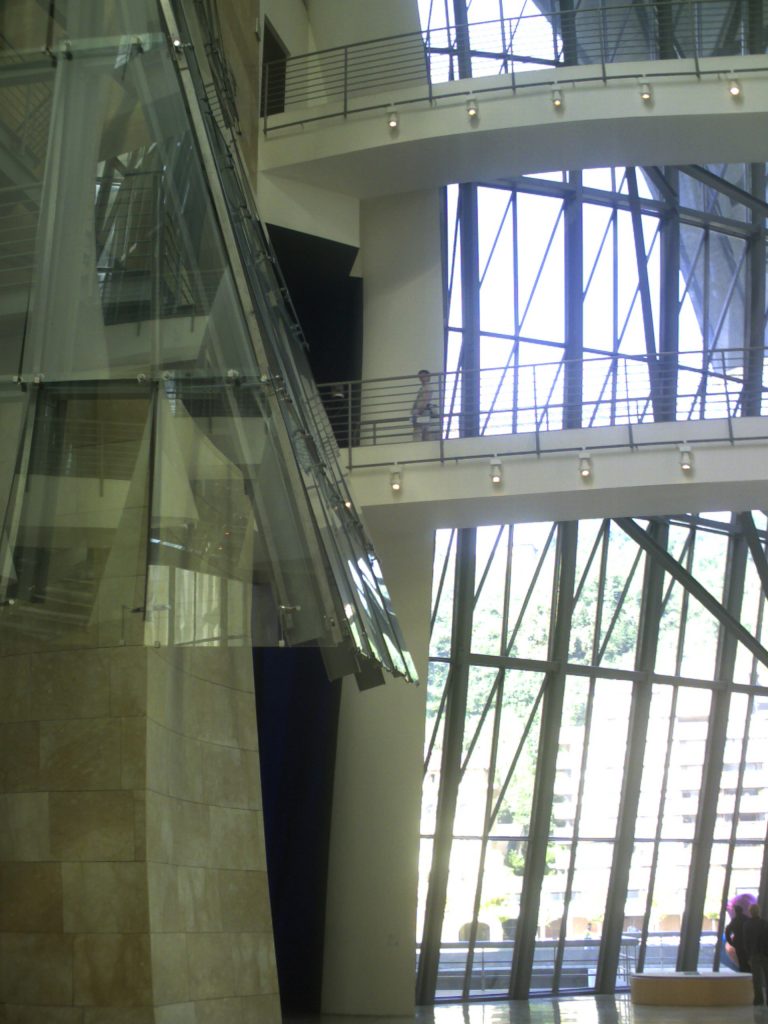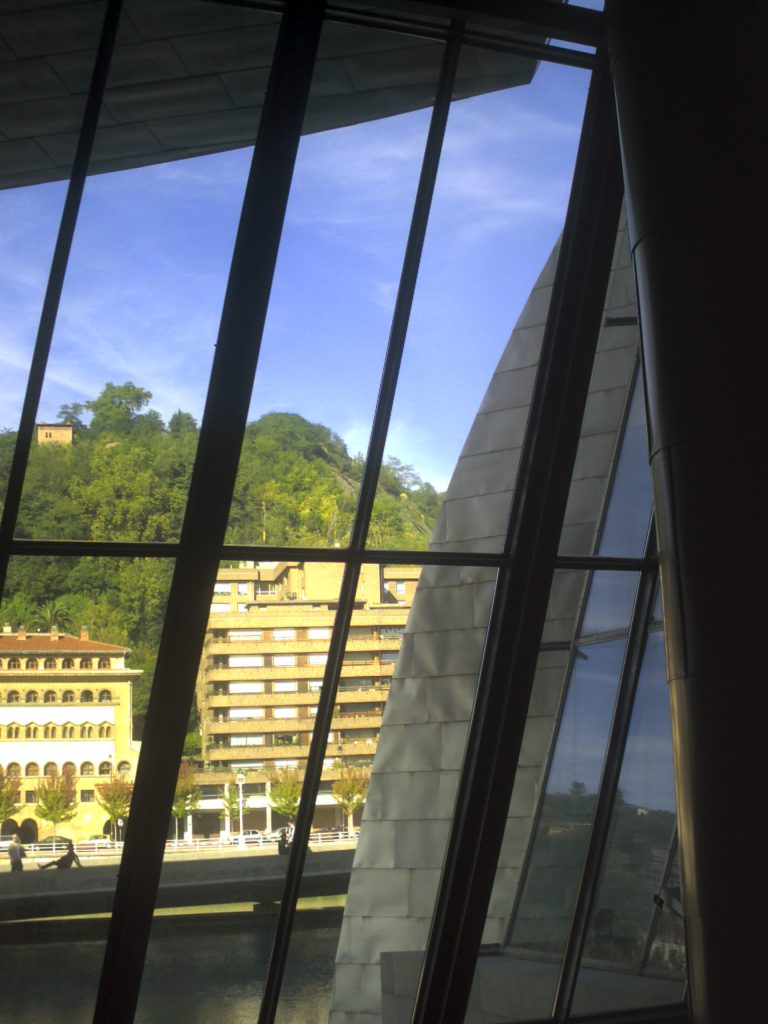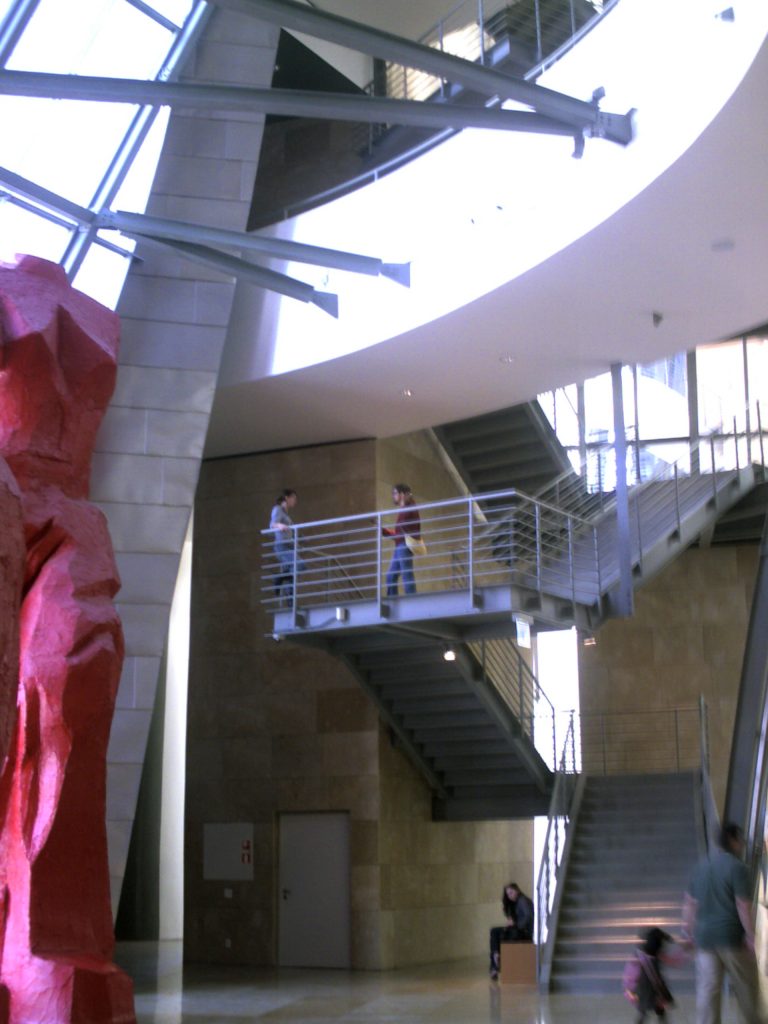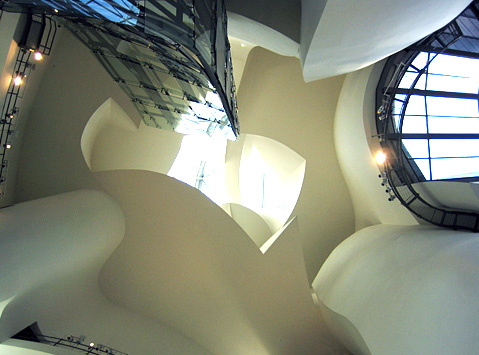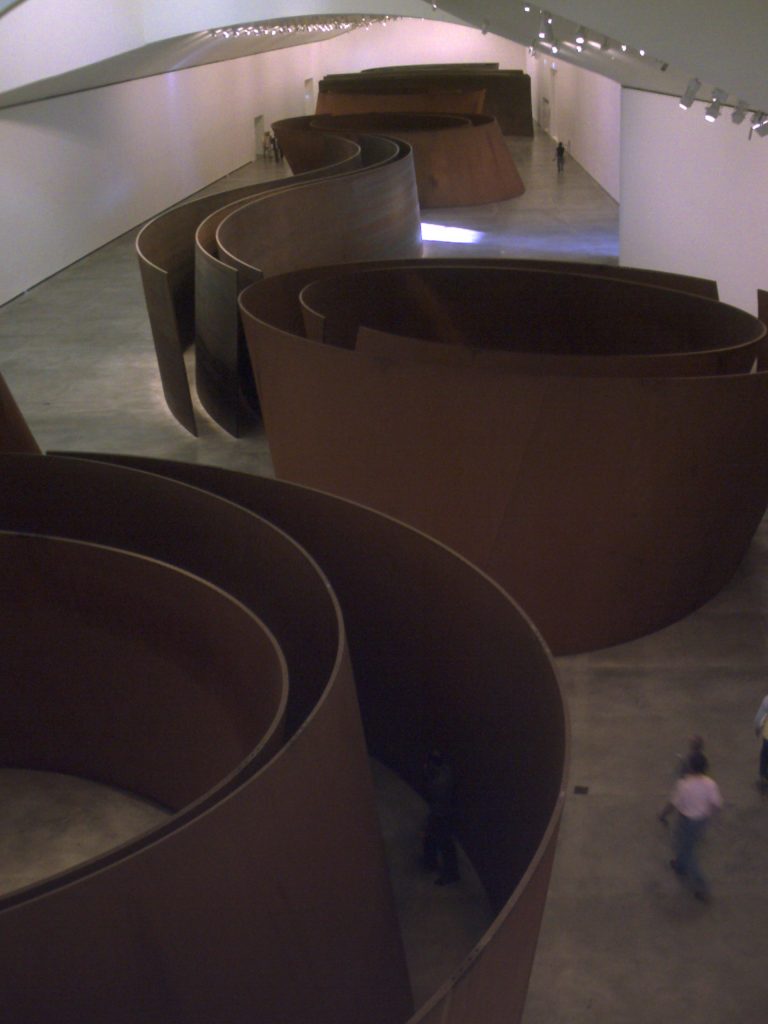Guggenheim Bilbao
Introduction
The work of American architect Frank O. Gehry, the Guggenheim Museum has played a key role in the urban revitalization and transformation of the area, in addition to becoming the symbol of the city of Bilbao, Spain. The building is a perfect example of the more avant-garde architecture of the twentieth century and represents a landmark for its innovative architectural design both abroad and domestically, forming a seductive backdrop for the exhibition of contemporary art. Visits can be made to both the interior and the exterior of the building.
Situation
It is situated on a plot of 32,500 square meters, of which 24,000 square meters are occupied by building. 9,066 square meters are devoted to exhibition spaces.
The museum is located 16 meters below the elevation of the city at the estuary of the Nervion.
El Puente de La Salve, one of the main entrances of the city, crosses through the building.
Concept
The design of the building follows the style of Frank Gehry. Inspired by the shapes and textures of a fish, it can be considered a sculpture, a work of art in itself. The forms do not have any reason nor are governed by any geometric law. The museum is essentially a shell that evokes the past industrial life and port of Bilbao. It consists of a series of interconnected volumes, some formed of orthogonal coated stone and others from a titanium dkeleton covered by an organic skin. The connection between volumes is created by the glass skin.
The museum is integrated into the city both by it height and the materials used. Being below the benchmark of the city, it does not surpass the rest of the buildings. The limestone, of a sandy tone, was selected specially for this aim. Seen from the river, the form resembles a boat, but seen from above it resembles a flower.
Spaces
Under the chaotic appearance created by the opposition of fragmented regular forms with covered stone, curved forms coated in titanium and large glass walls, the building is built around a central axis; the hall, 50 meters high, a monumental empty space topped by a metal dome. Around it, a system of curved bridges, glass elevators and stair towers connecting the 19 galleries spread over three floors, which combine classic rectangular space with other unique forms and proportions, all lit by the dome zenith. Temporary exhibitions and large-format works have a place in a gallery of about 30 m. wide and nearly 130 m. long, free of columns, located on the volume that passes under the La Salve Bridge.
Structure
Because of their mathematical complexity, the sinuous curves were designed using a three dimensional design software called Catia, which allowed designs and calculations that, years earlier, had not been possible.
The building is built with load-bearing walls and ceilings, which have an internal structure of metal rods that form grids with triangles. The shapes of the museum could not have succeeded if it did not use load-bearing walls and ceilings. Catia determined the number of bars required in each location, as well as the bars positions and orientations. In addition to this structure, the walls and ceilings have several insulating layers and an outer coating of titanium. Each piece is unique and exclusive to the place, determined by Catia.
Materials
Built of limestone, glass and titanium, the museum used 33,000 pieces of titanium half a millimeter thick, each with a unique form suited to its location. As these pieces are so thin, a perfect fit to the curves is necessary. The glass has a special treatment to let in the sun’s light, but not its heat.



